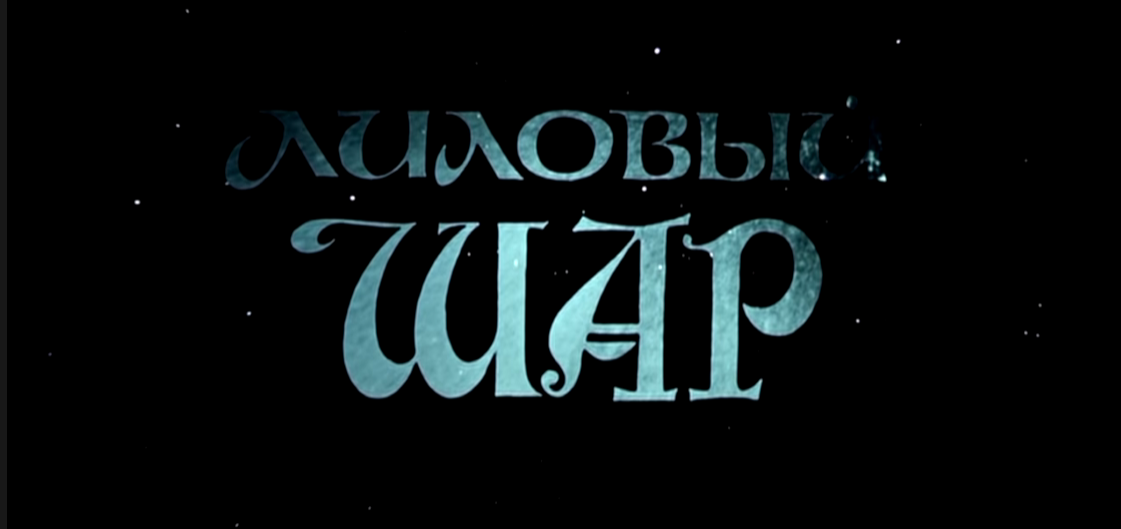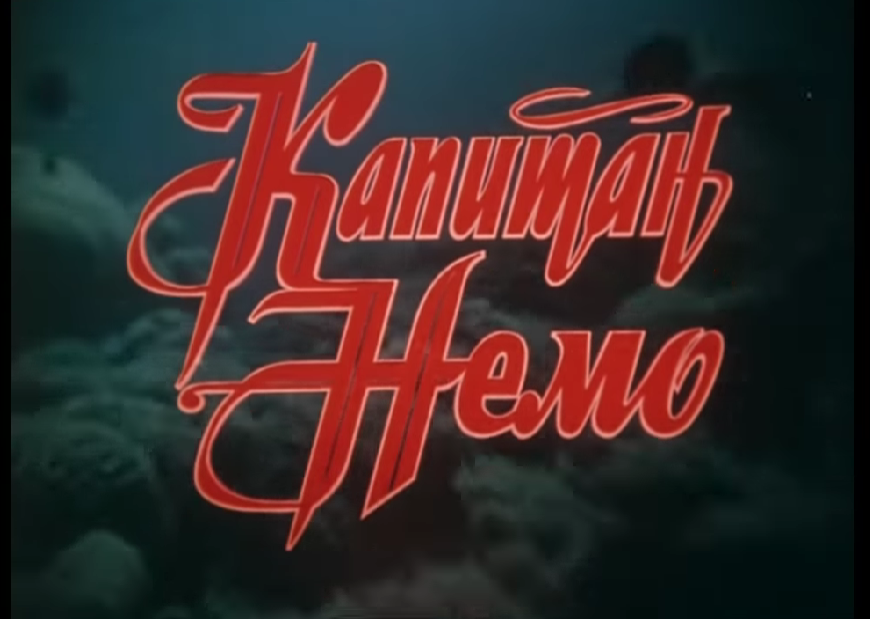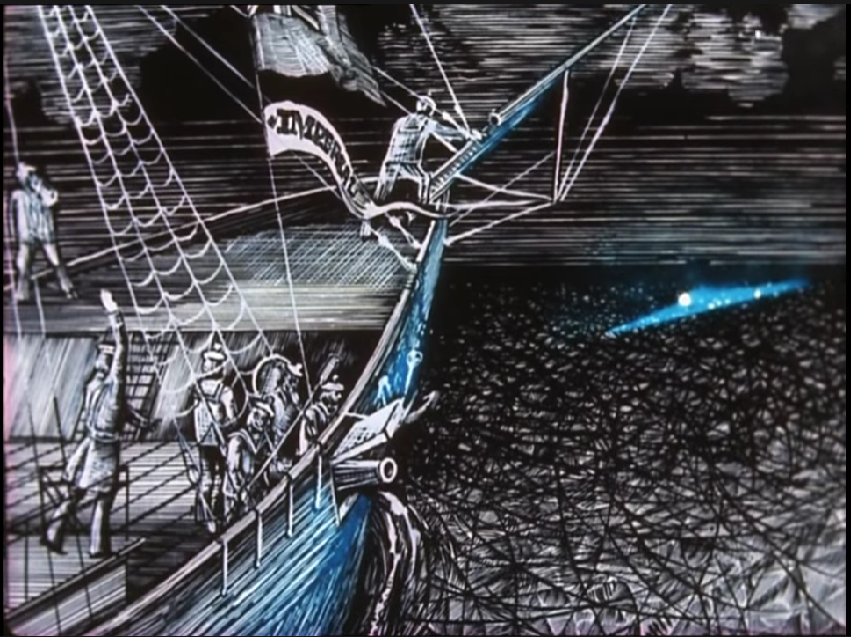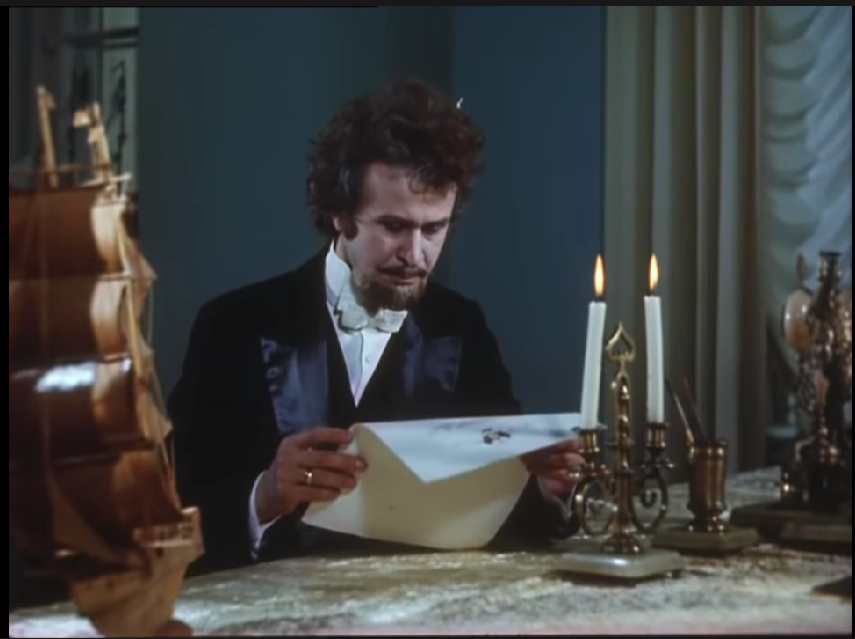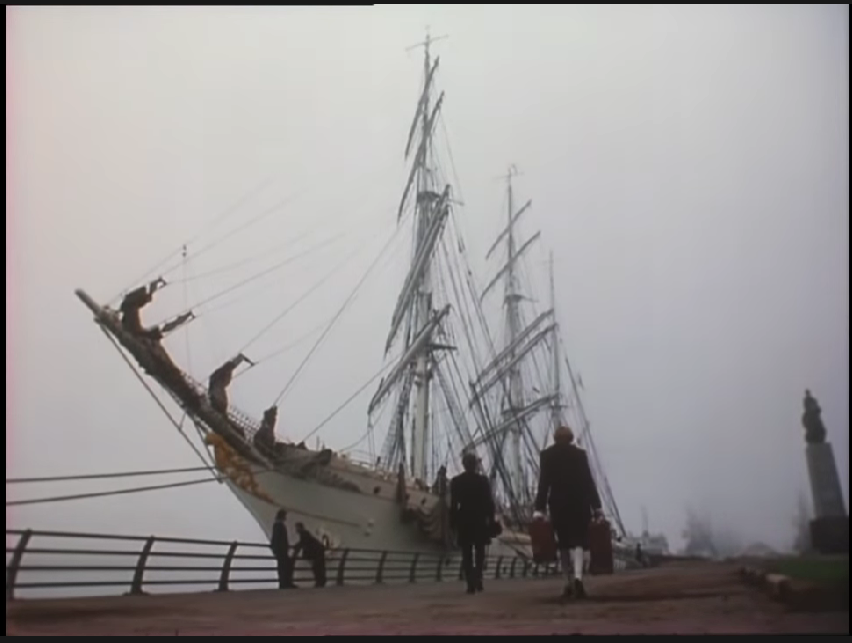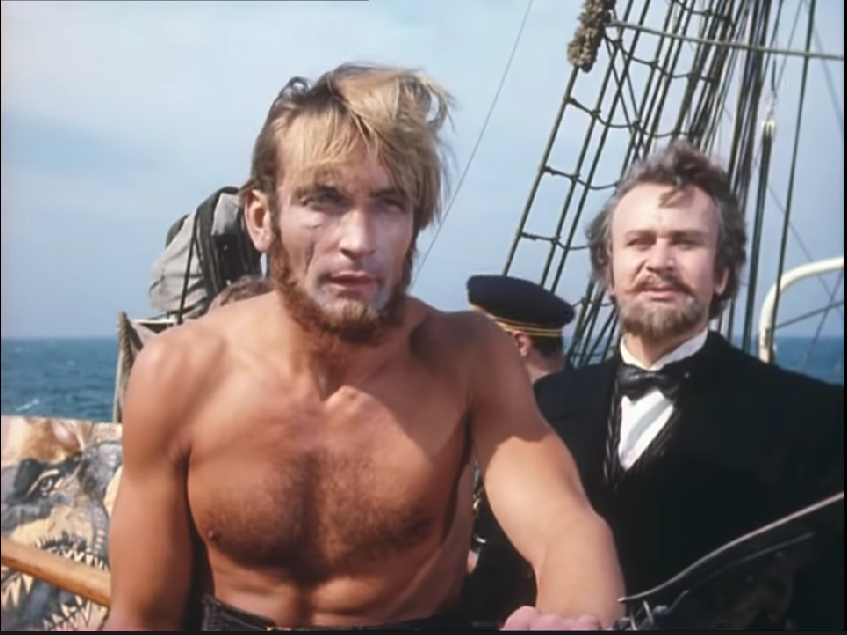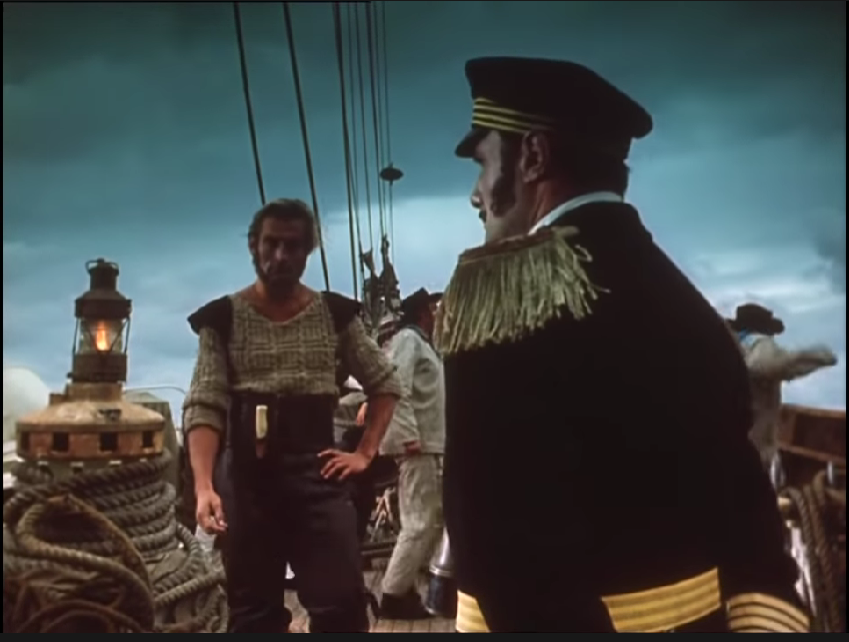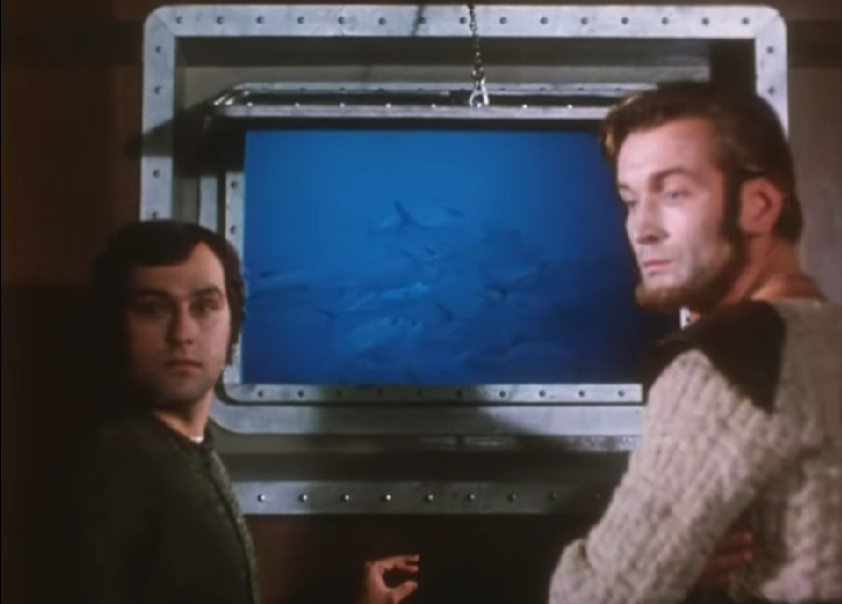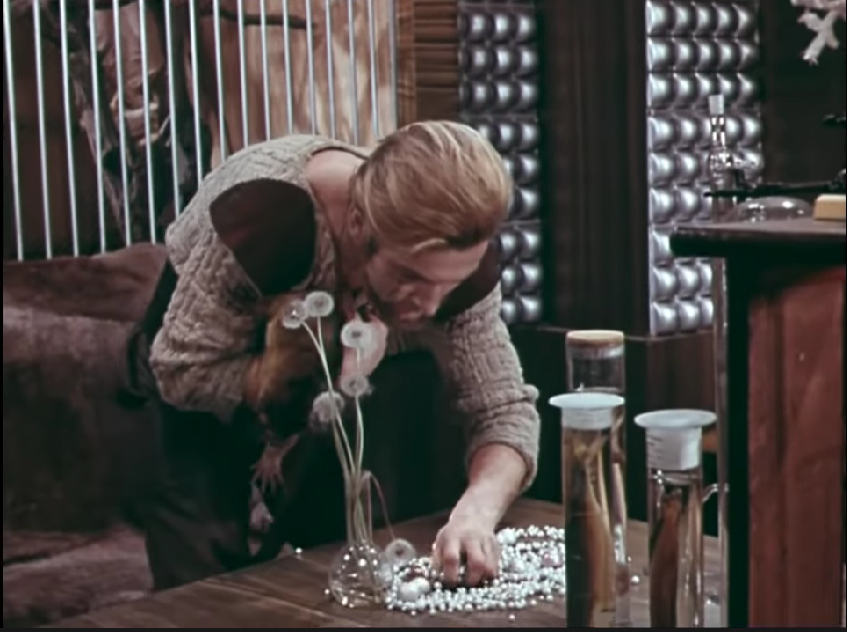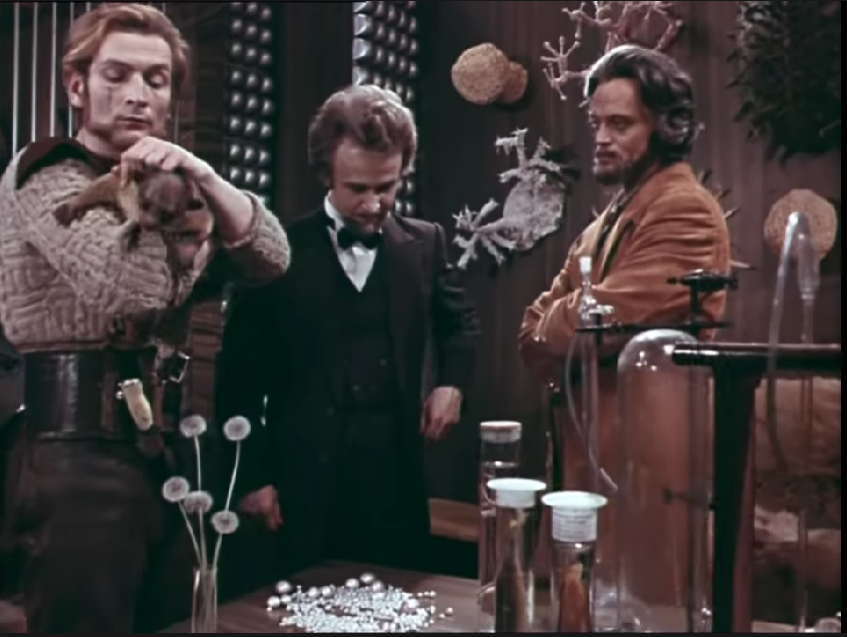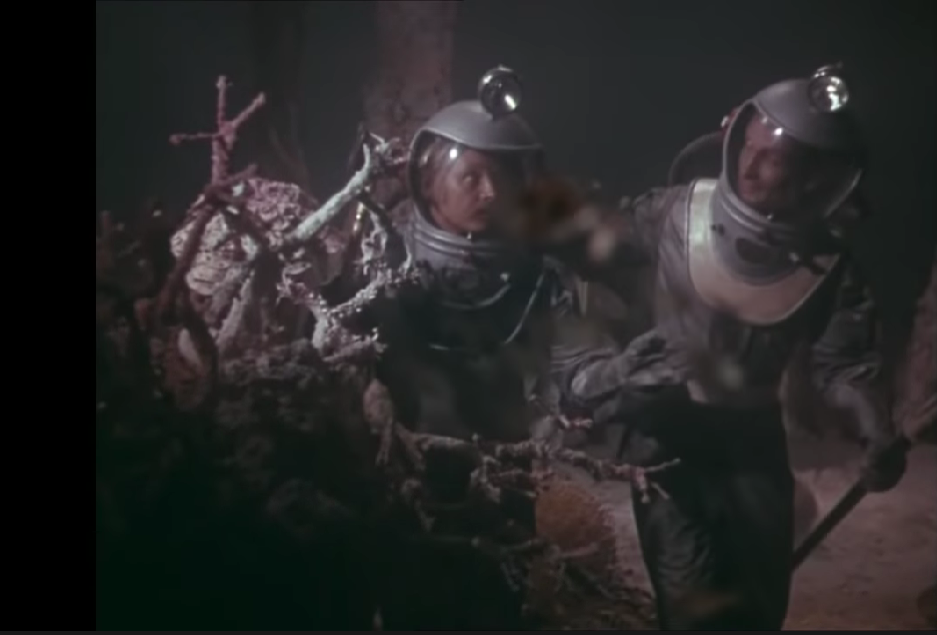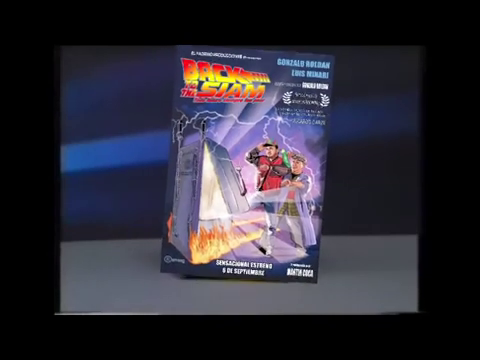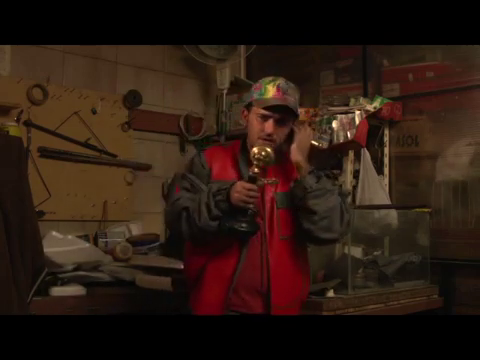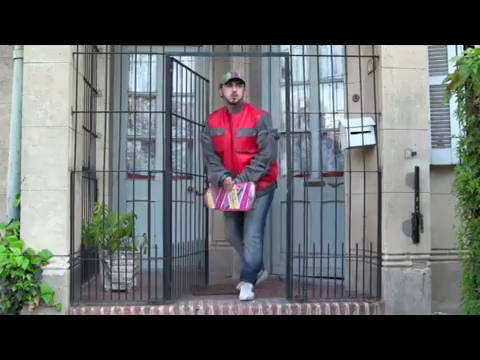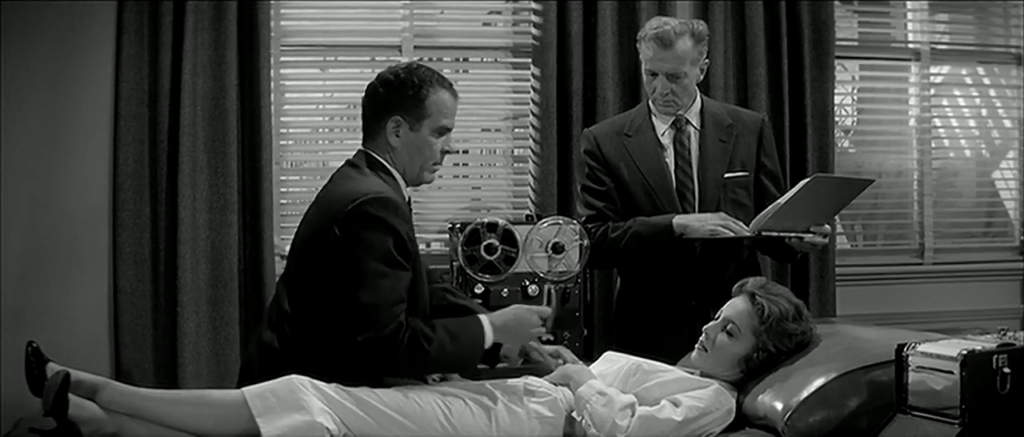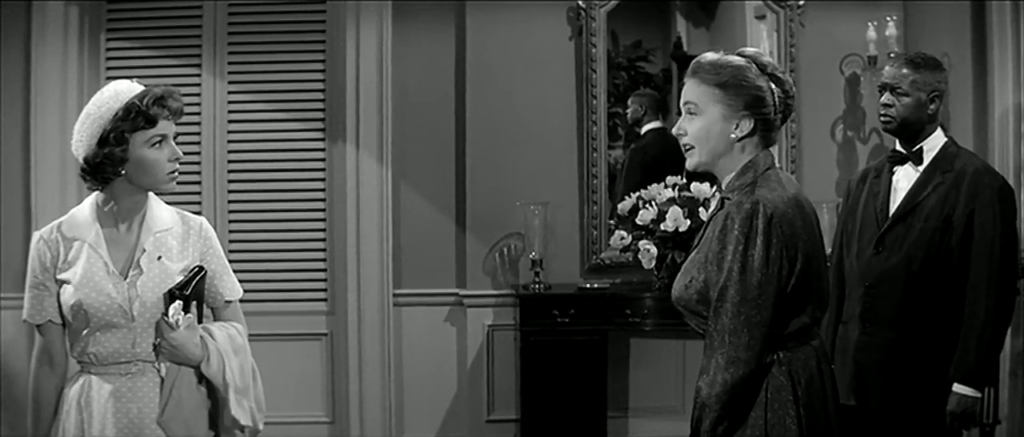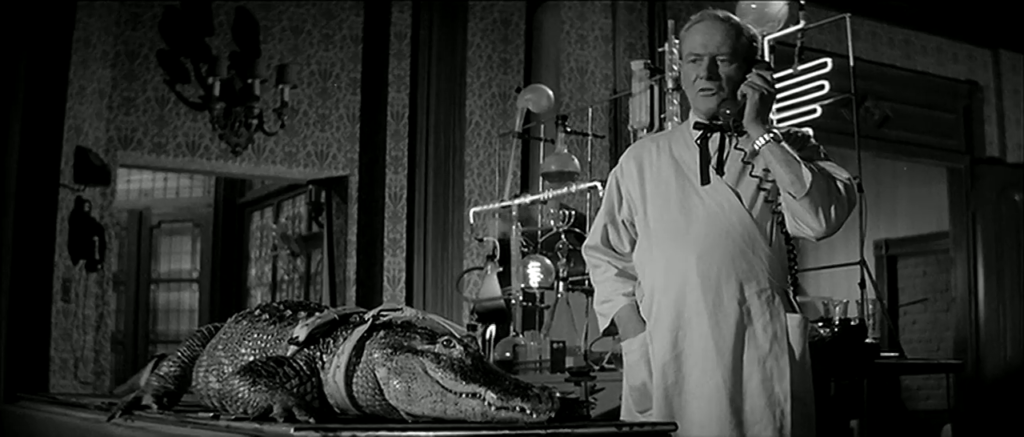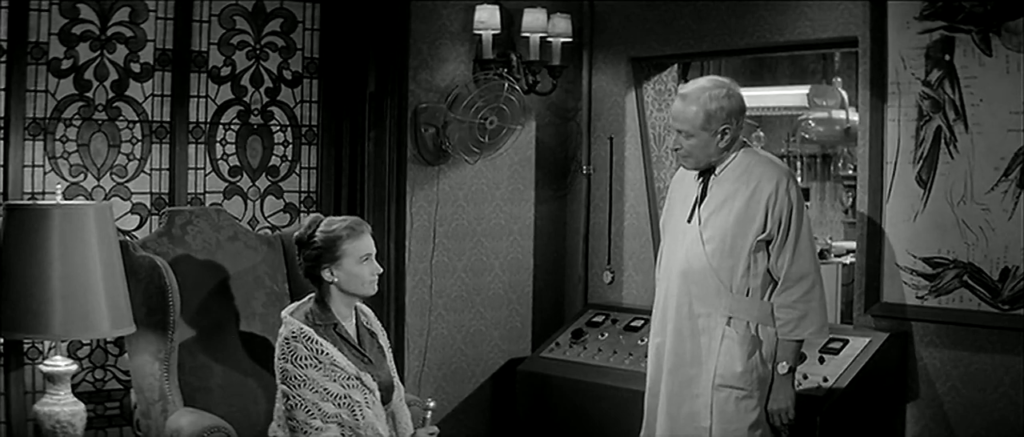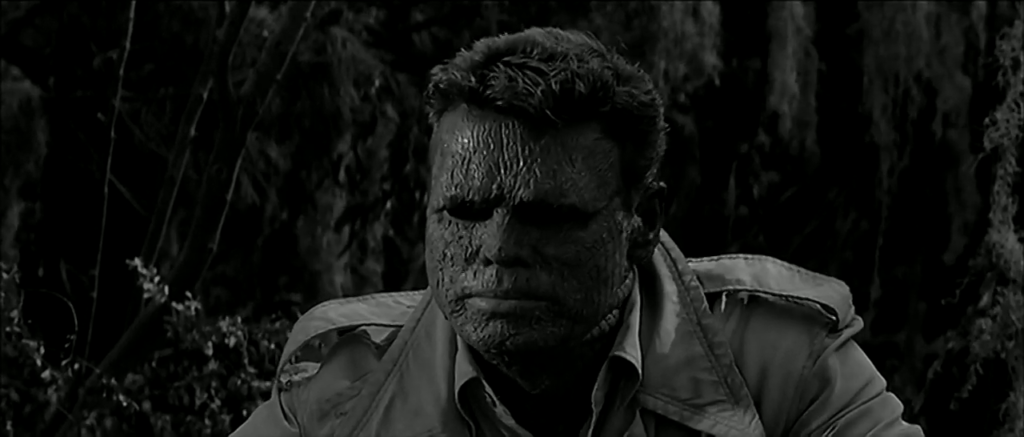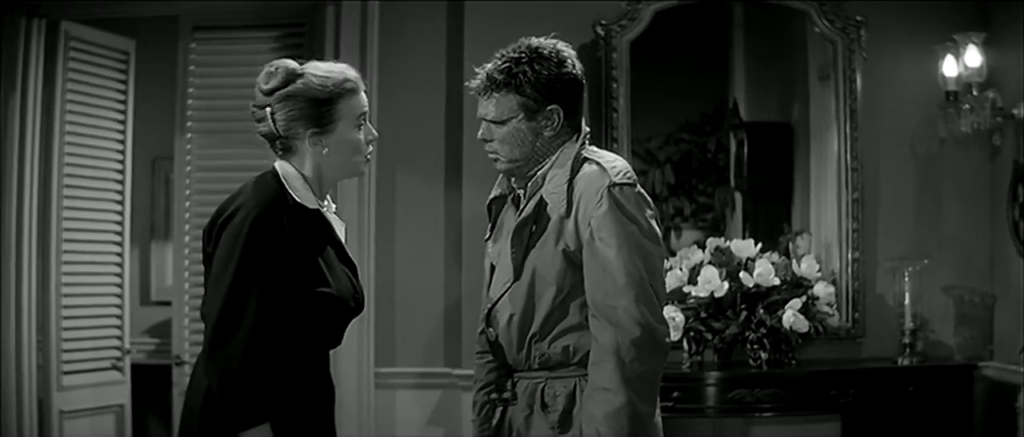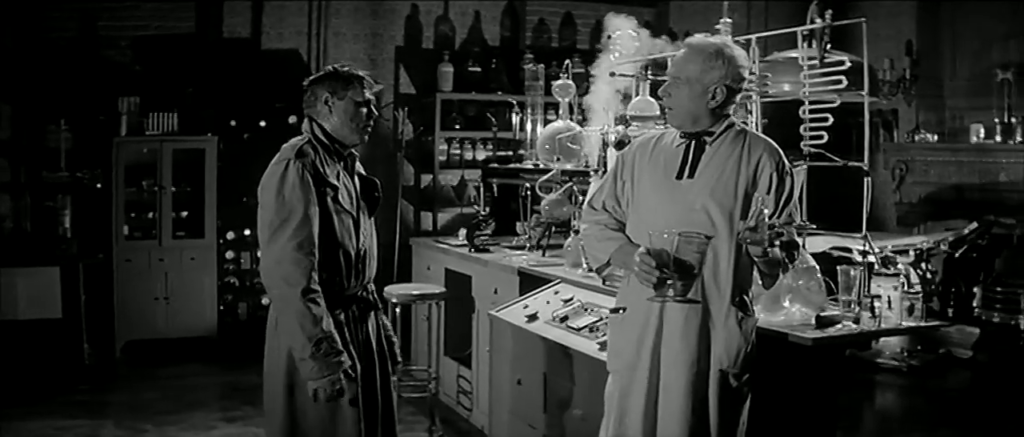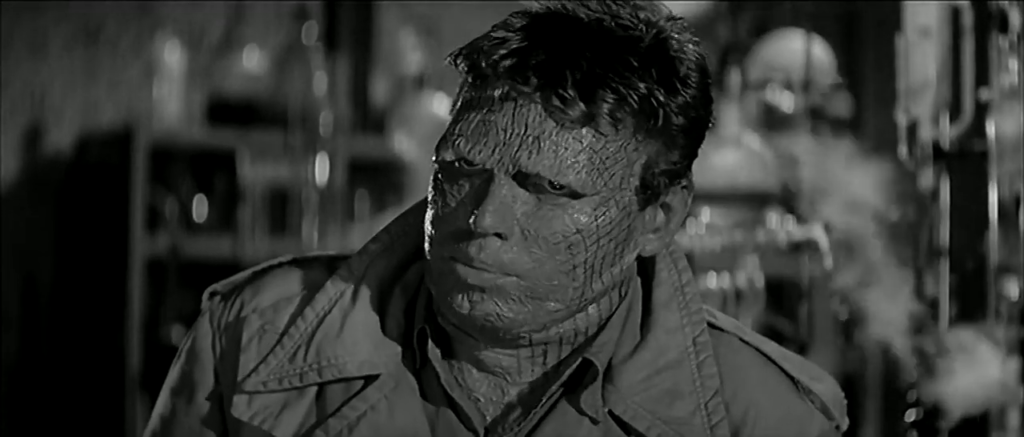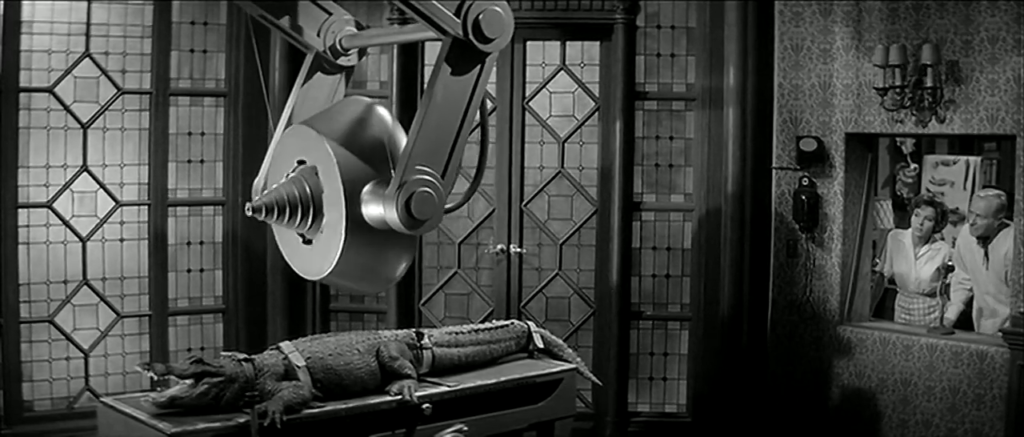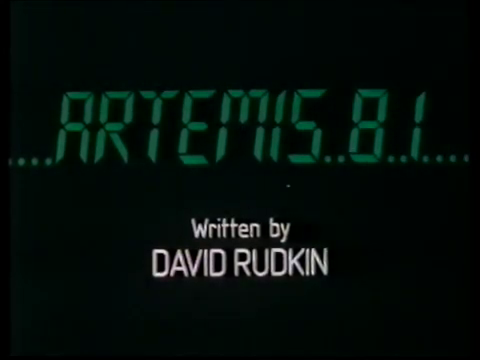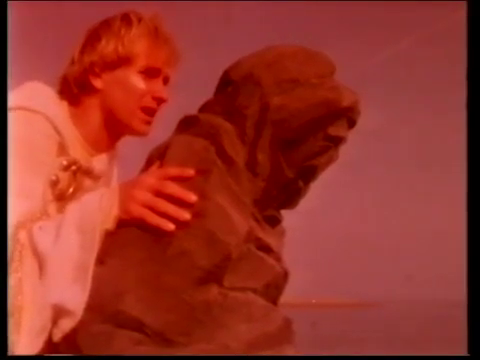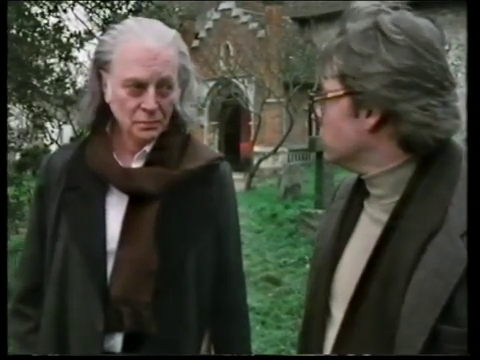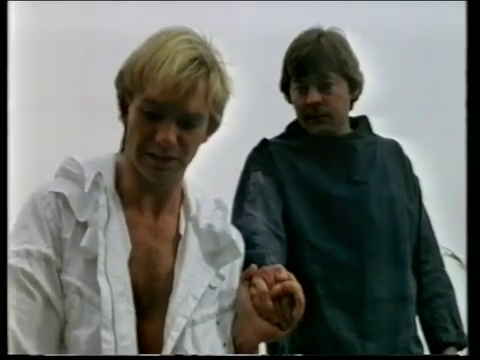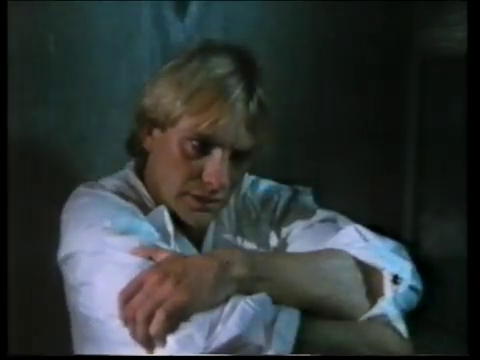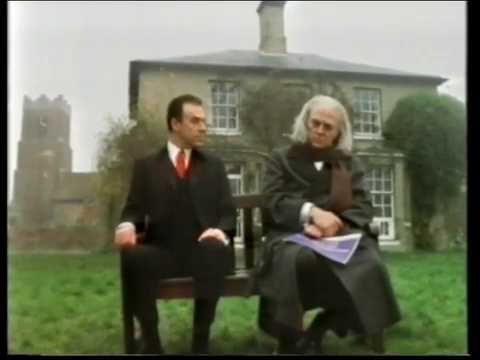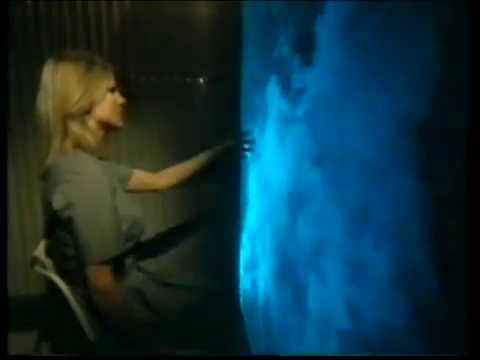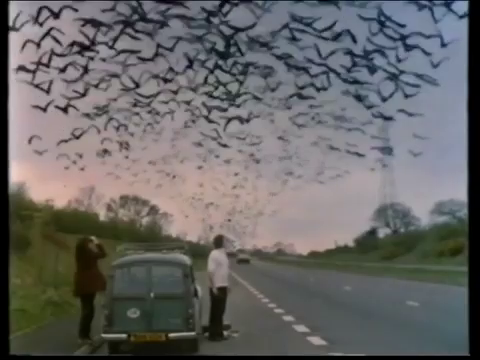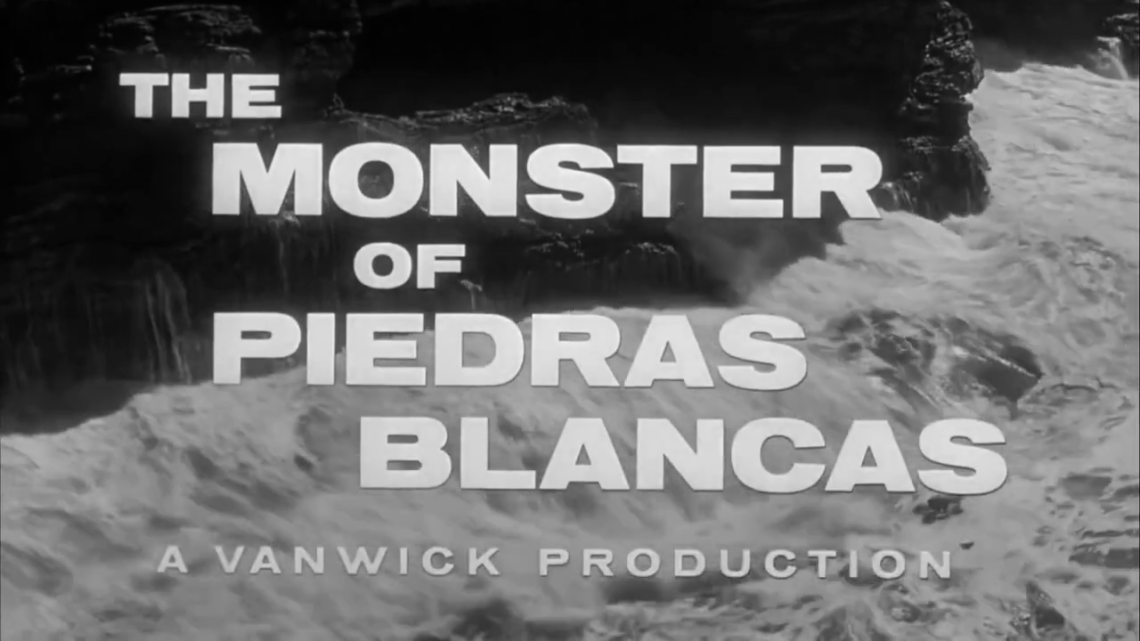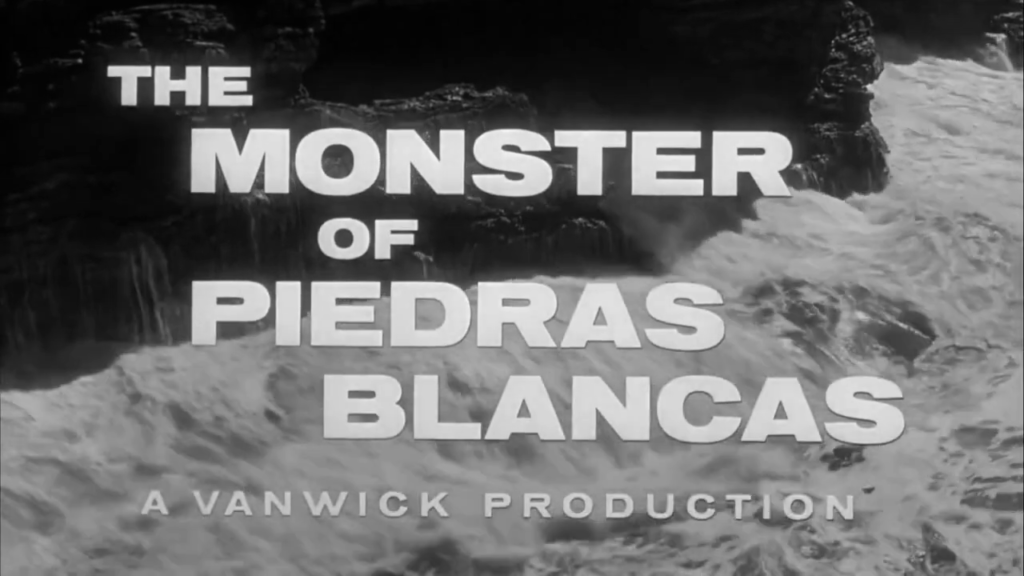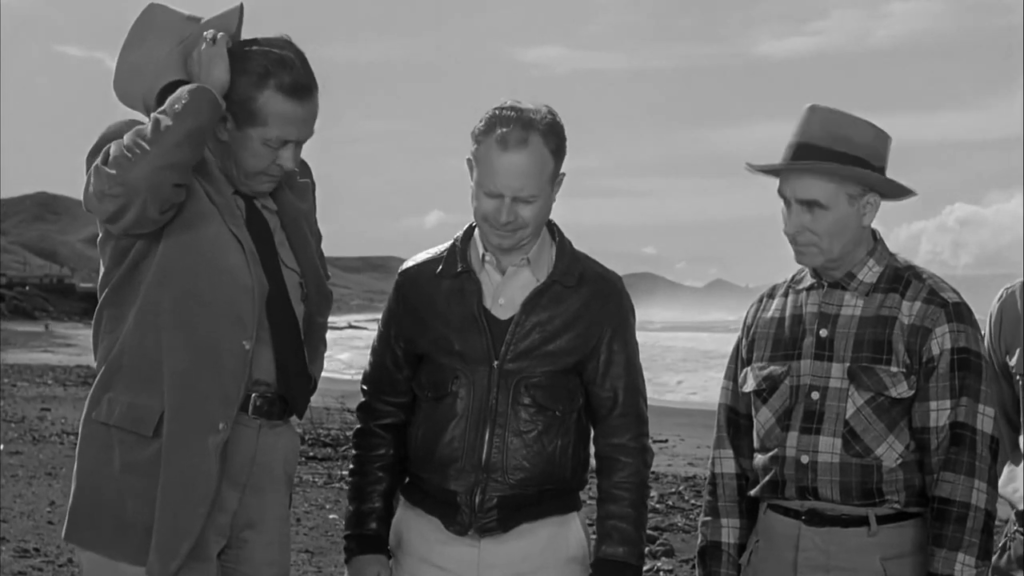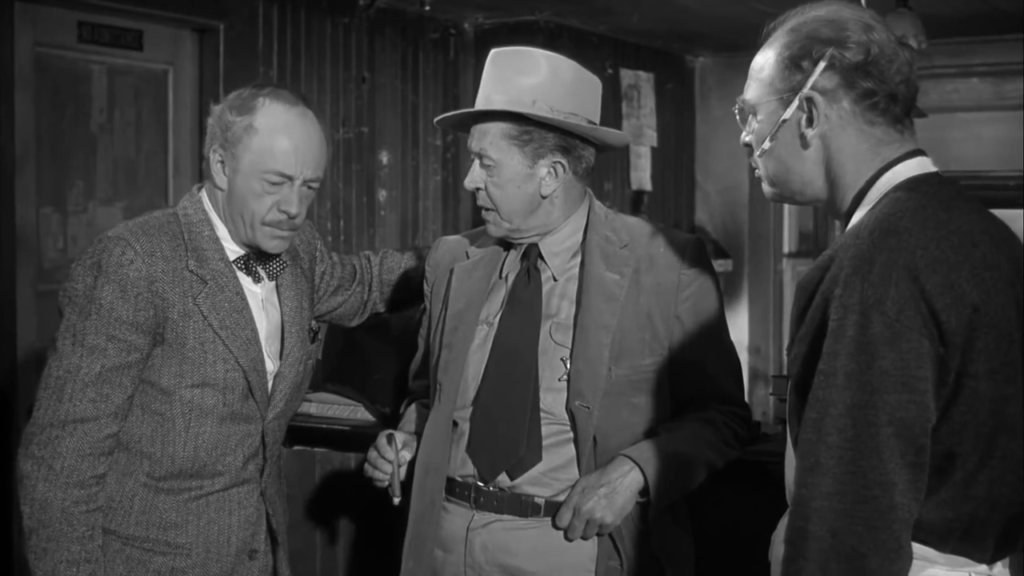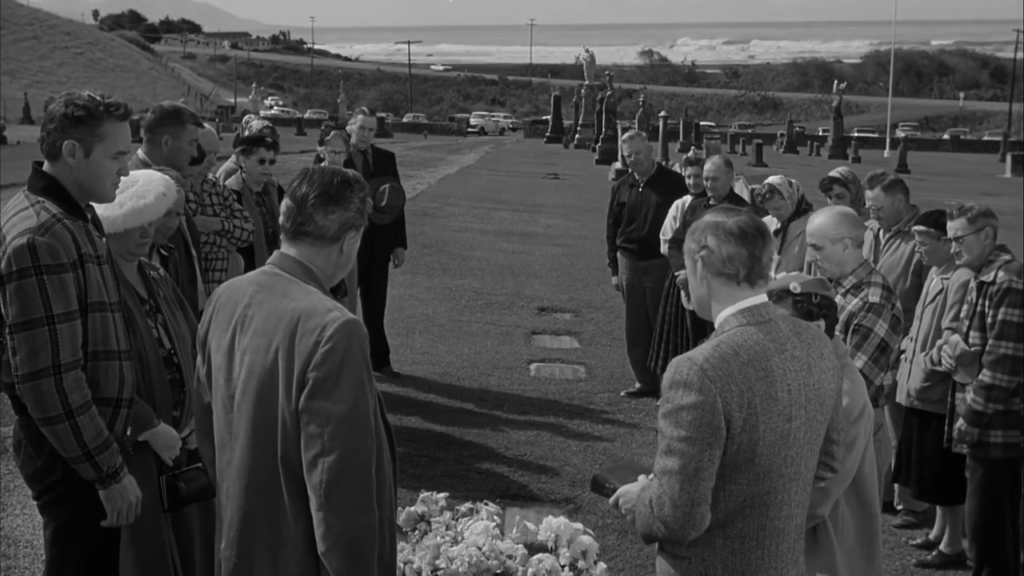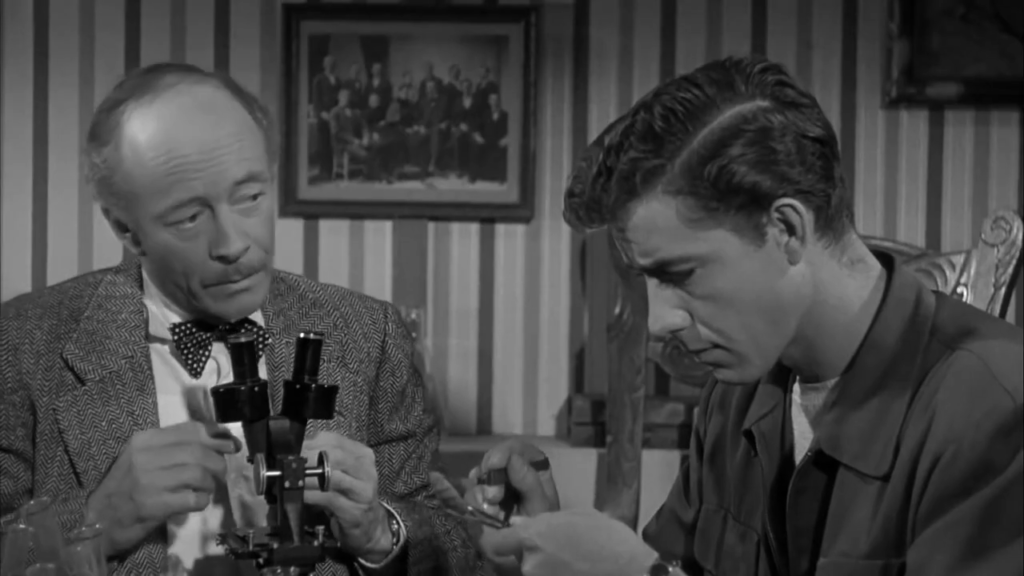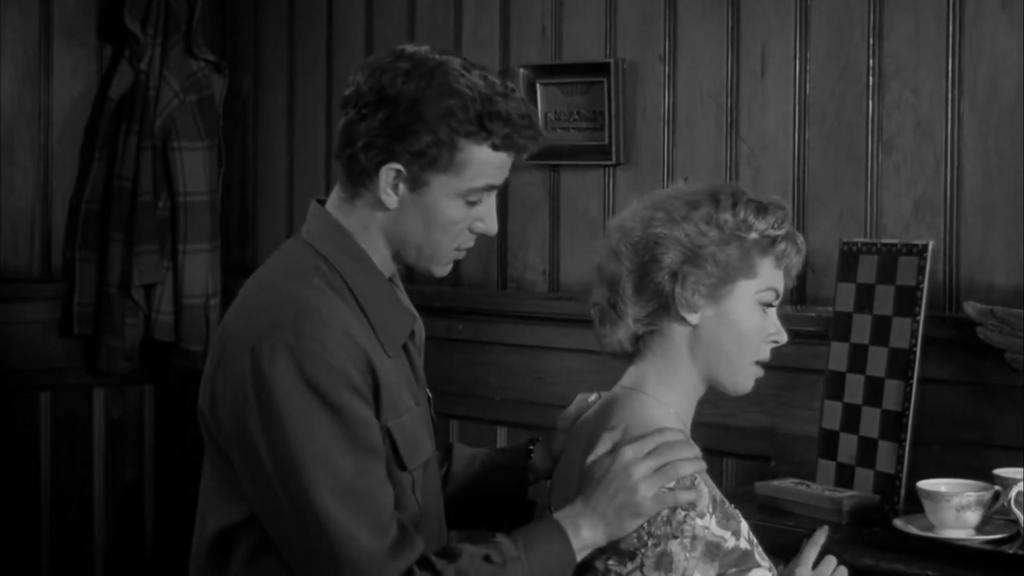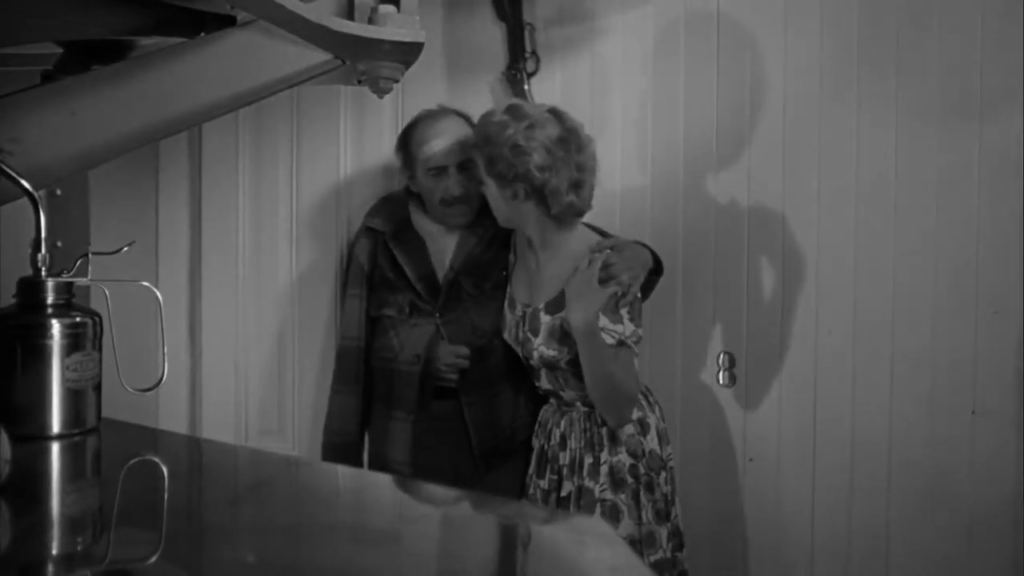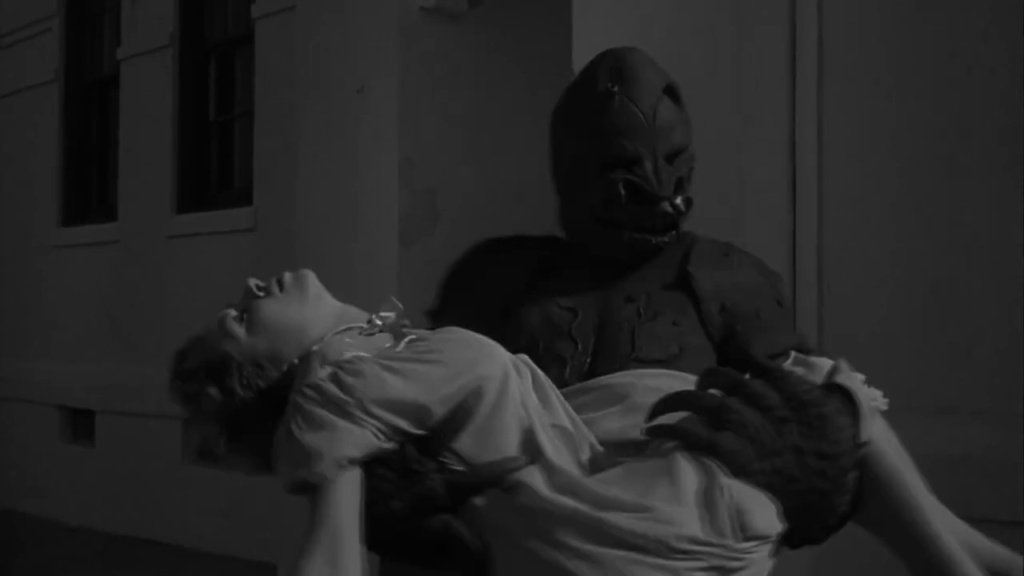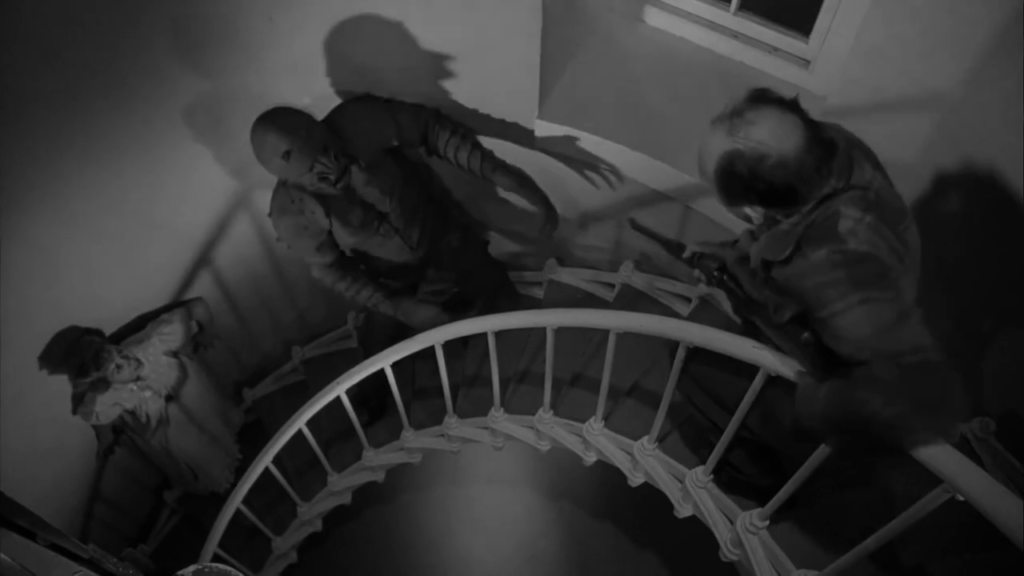-
#502 – Alice’s Birthday (2009)


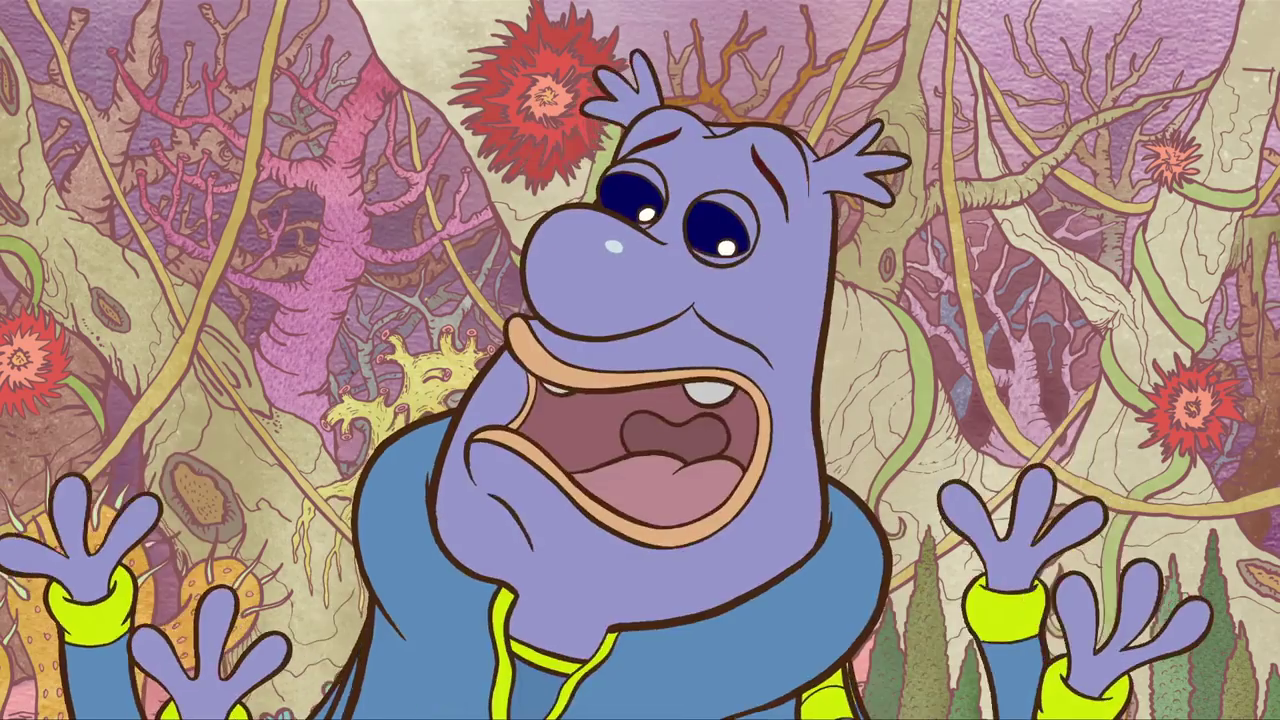

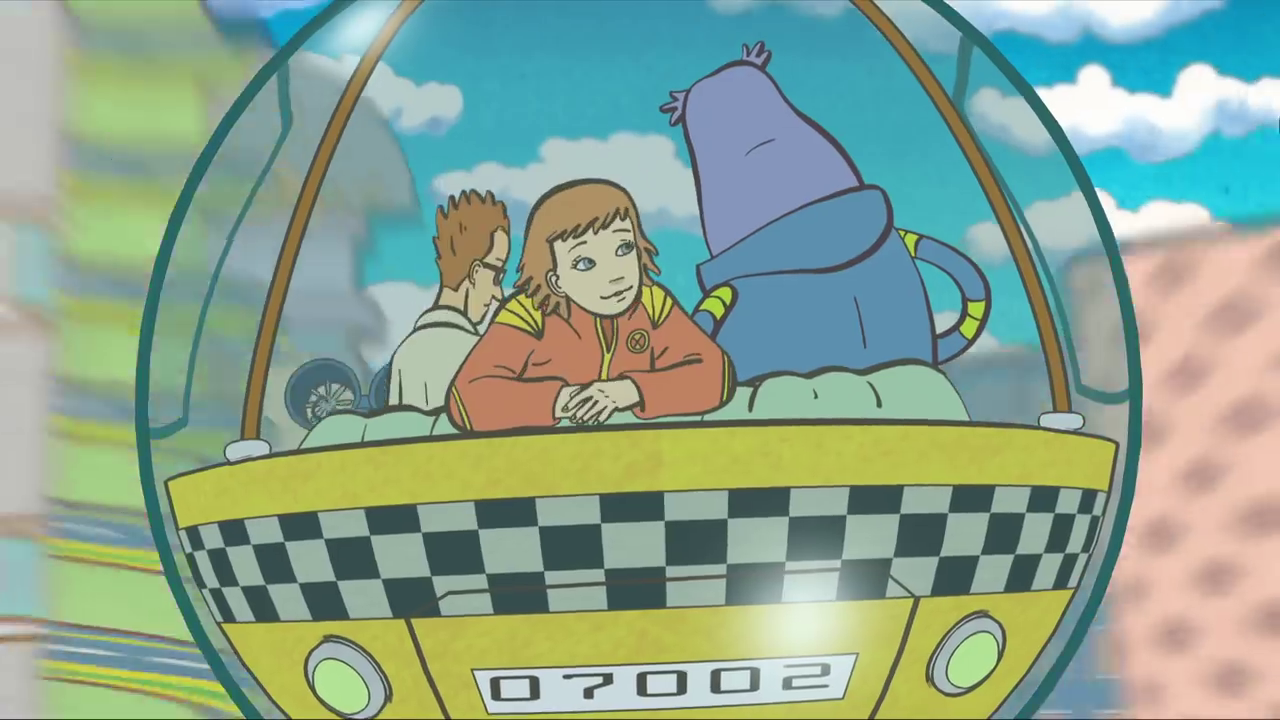
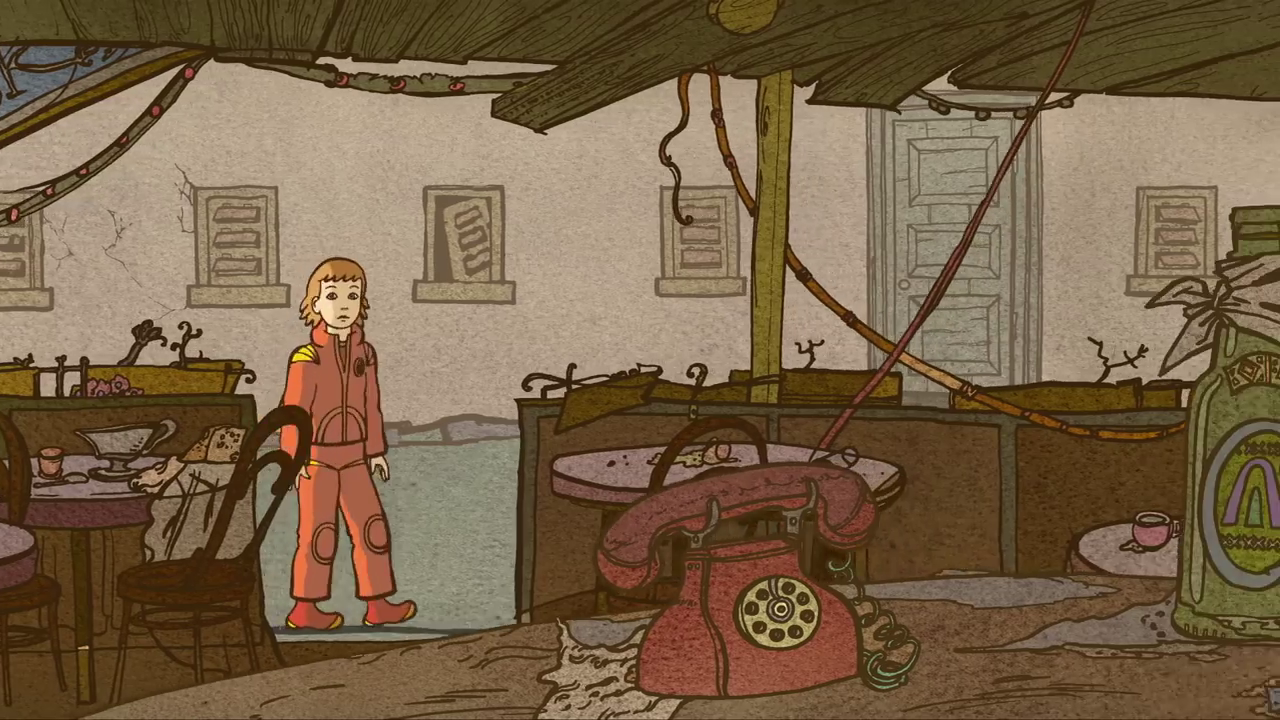
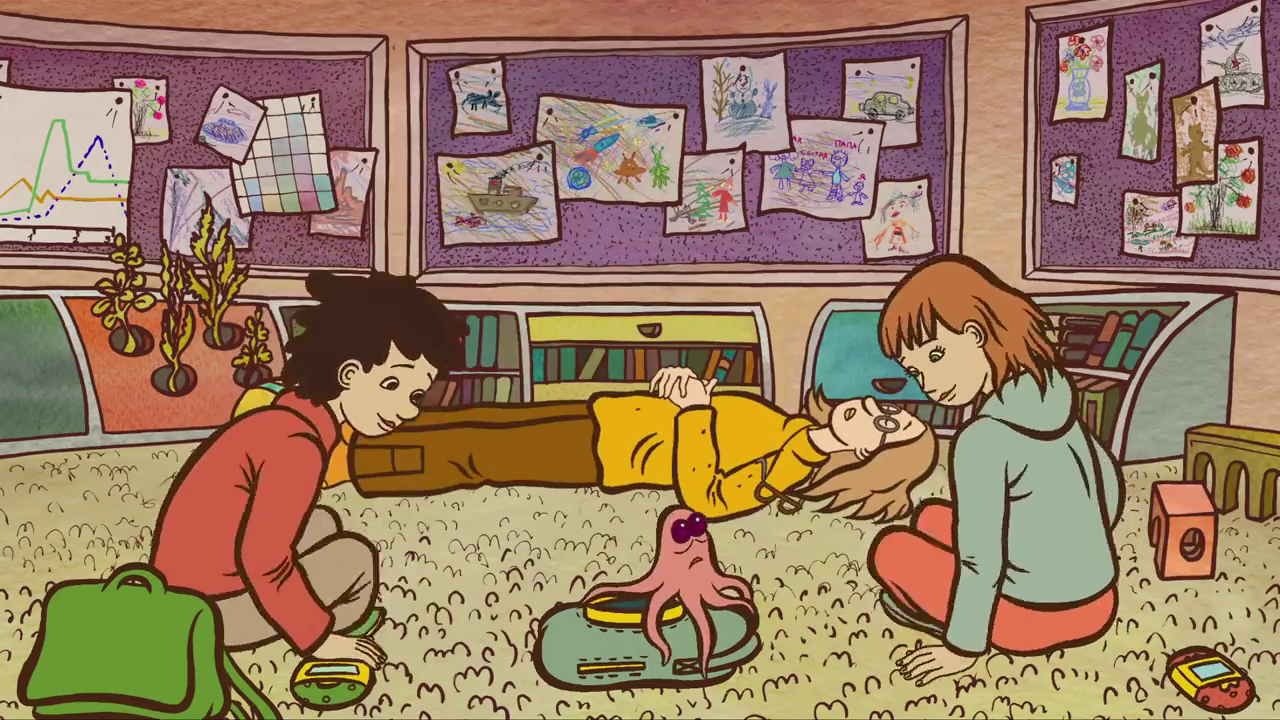
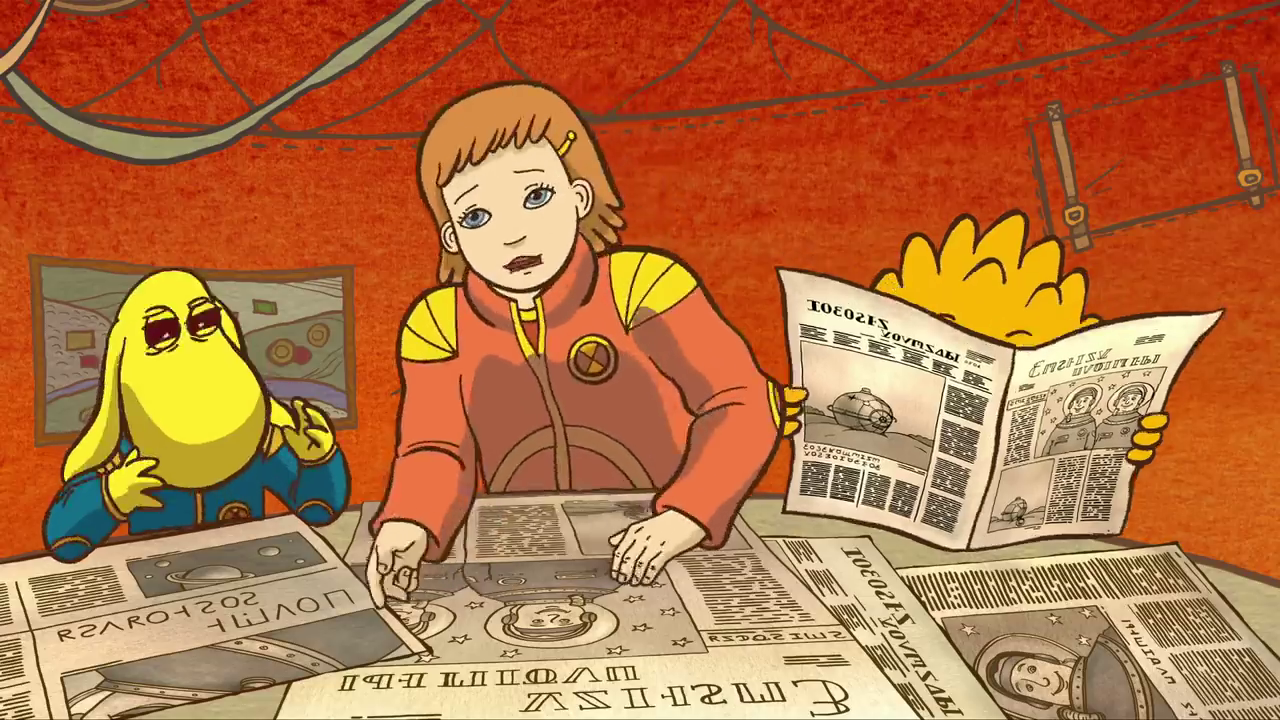
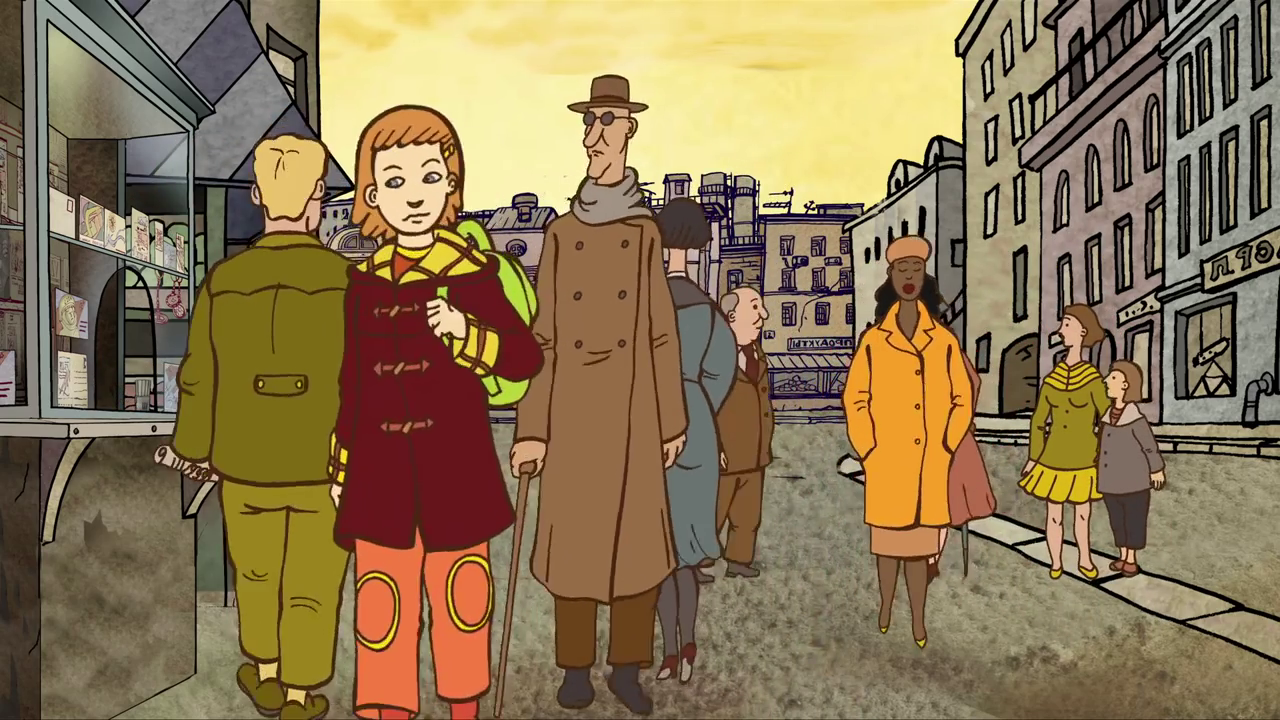
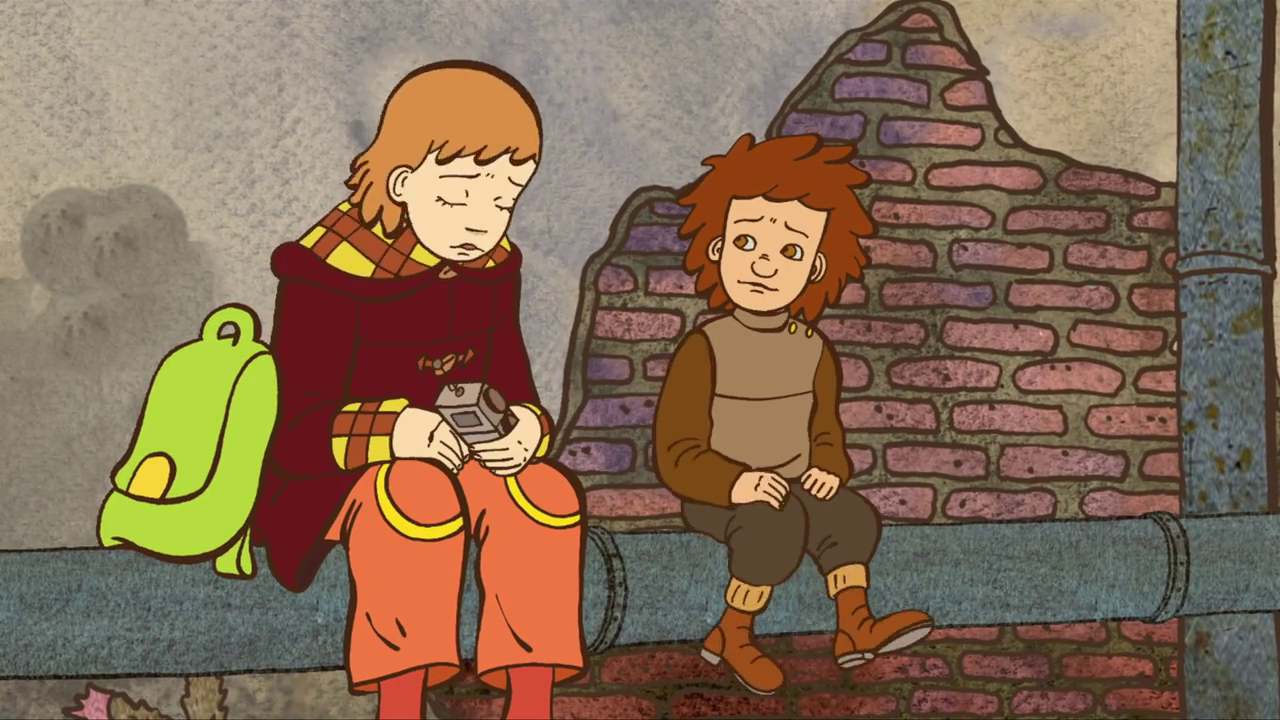
Alice’s Birthday (2009)
Film review #502
Director: Sergey Seryogin
SYNOPSIS: Alice Selezneva has just failed a history exam at school, but things are looking up, as a friend of her Father’s Gromozeka, has arranged a trip for her birthday to the planet of Koleida with a research expedition. The planet once had a flourishing civilisation, but a space virus wiped it out centuries ago. Alice decides to use the expedition’s time travel machine to go back in time (along with Professor Rrr, another member of the expedition) to save the planet’s population, not knowing the virus is still alive in the present and approaching the camp of the expedition…
THOUGHTS/ANALYSIS: Alice’s Birthday is a 2009 animated sci-fi film, which is a re-imagining of the popular 1987 film Lilac Ball and the original novel. The film starts out introducing Alice, an energetic and mischievous girl who fails a history exam after causing chaos in the classroom. She meets up with her Father’s friend Gromozeka, who has a surprise for her upcoming birthday: to join a research expedition to the planet Koleida, where a flourishing civilisation was wiped out by a space virus centuries ago. The film, as mentioned is a re-imagining of the film Lilac Ball and it’s original novel, part of a series of adventures starring the character of Alice. The series was quite popular in the Soviet Union, and so this film is riding a little on that nostalgia bandwagon. However, it certainly stands as a film in it’s own right too, as the story deviates from the original film a fair amount, and being an animated film, has a lot more freedom to bring the futuristic world to life. The story itself flows pretty well, being split into a fairly typical three-act structure that has a good amount of variety, humour, action, and even some scary dark moments. The essentials of the story are things that you have probably seen before involving time travel and trying to change to change the course of the future in time, but it is still entertaining enough to watch.
Alice is a very typical lead for these types of films: adventurous, mischievous, and a typical kid which it’s young audience can identify with. Her character has a wide range of emotions and relationships with other characters, so she feels like a well-rounded individual with enough spirit and energy to be her own person. One notable difference in the rest of the characters form Lilac Ball is that the animated medium gives a lot more freedom to give the aliens a more alien design; in Lilac Ball, the characters which were aliens in the novels were re-imagined as mostly human; in the animated Alice’s Birthday, the aliens aboard the research expedition are all shapes and sizes, and though we don’t hear from many of them, their unique appearances make the film colourful and interesting. There is some weird comments near the beginning of the film, which seem to suggest there’s some discrimination against aliens on Earth, but it’s not really brought up again or addressed, so that’s a bit odd. The minor characters, like Professor Rrr and Gromozeka have a very specific role, and you know what to expect when they’re on screen, which is comforting. On a more novel note, the commander of the expedition is voiced by Natalya Murashkevich, who played Alice in Lilac Ball and the 1984 mini series Guest from the Future, which is a nice nod to those productions, and reinforcing the idea that there is a bit of reliance on nostalgia for this film, even though the target audience is obviously a generation that will not have seen those originals.
The animation is fairly fluid, and the characters and world are colourful and animated enough so that it feels like things never really stand still. This is good in the action scenes, but it becomes a bit more choppy when the characters are moving more slowly. I’m not sure how this compares to other contemporary Russian animation, but it feels like a mix between modern productions, while also having a bit of that Soviet-era aesthetic within it too. Again, maybe that’s part of the nostalgia effect the film is riding on. There’s some musical numbers which are a bit generic, but again, perfectly serviceable for a children’s film. Overall, Alice’s Birthday creates a colourful and energetic world for it’s titular character to be her adventurous self: the designs of the aliens and the futuristic setting are fun, varied and interesting. The story is a little formulaic being a very typical time travel scenario, but it is still made entertaining by having interesting, individual characters, and expressing a variety of emotions throughout the different scenes. A decent children’s film, which also banks on some nostalgia for a beloved character for adults too, although they probably won’t find too much appeal in the content of the film.
-
#501 – Lilac Ball (1987)
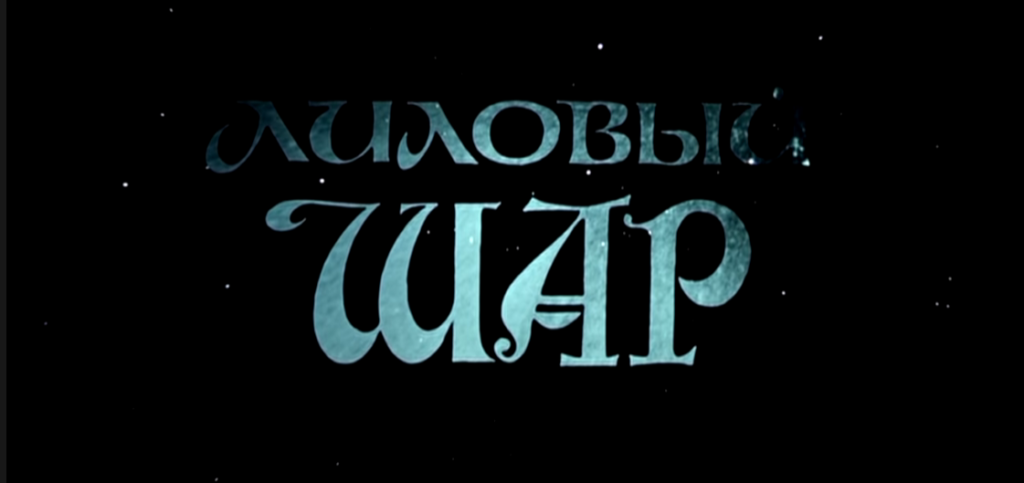
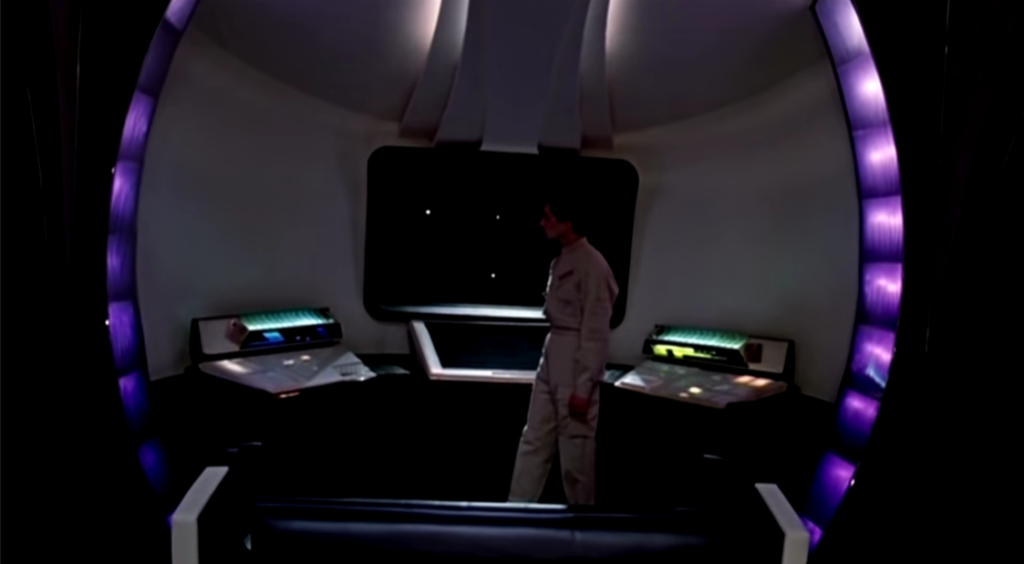
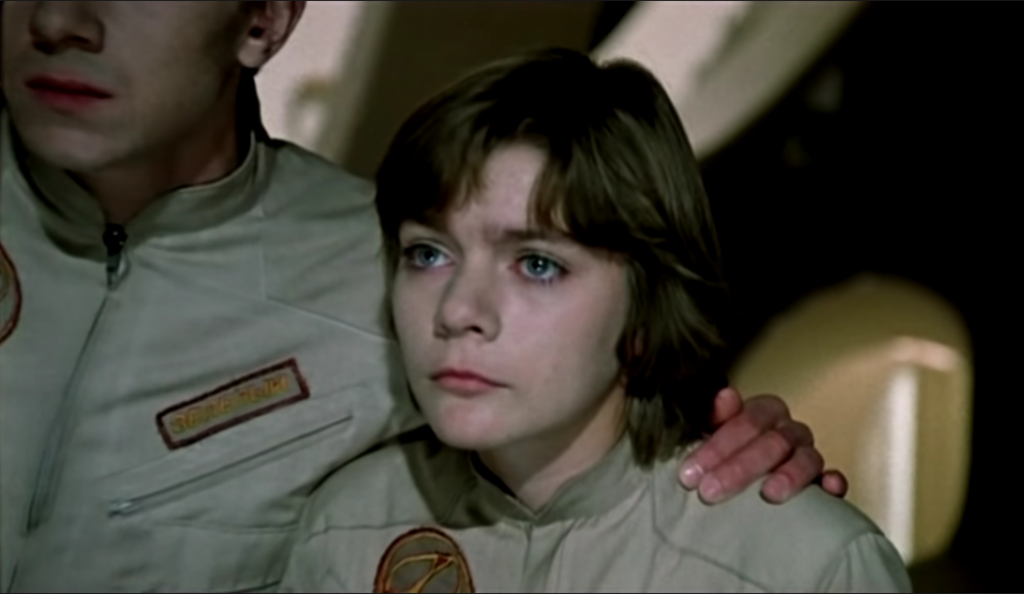
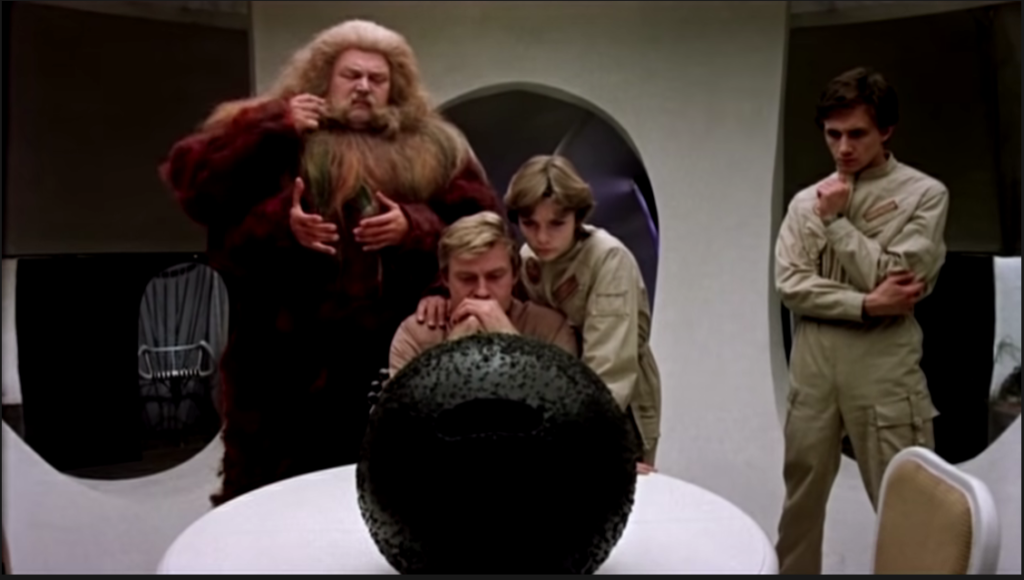
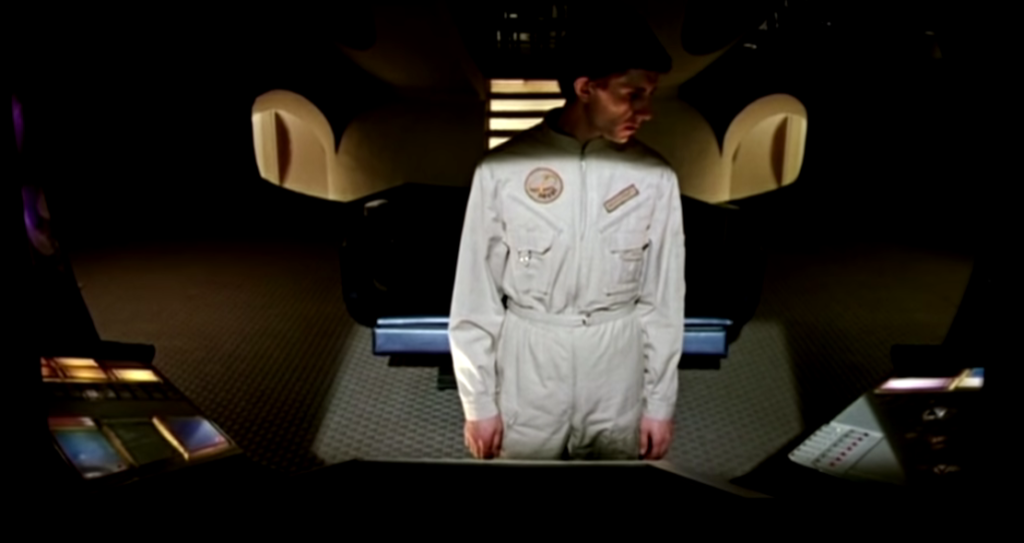
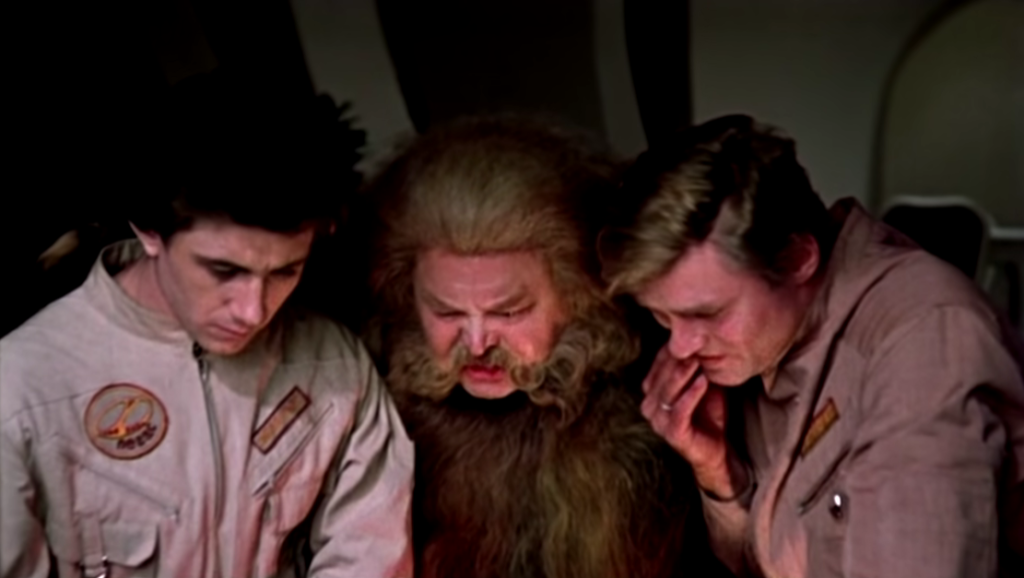
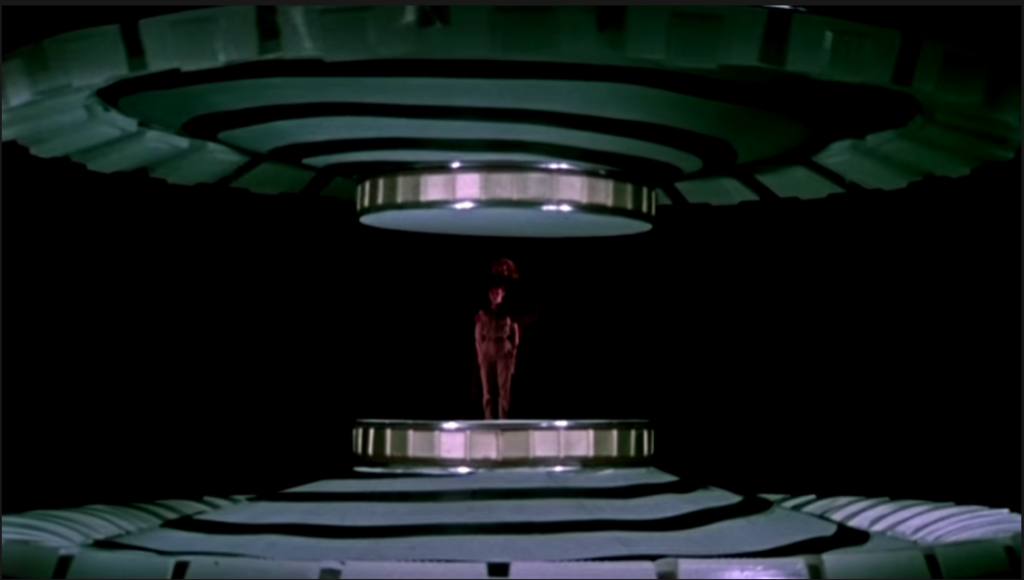
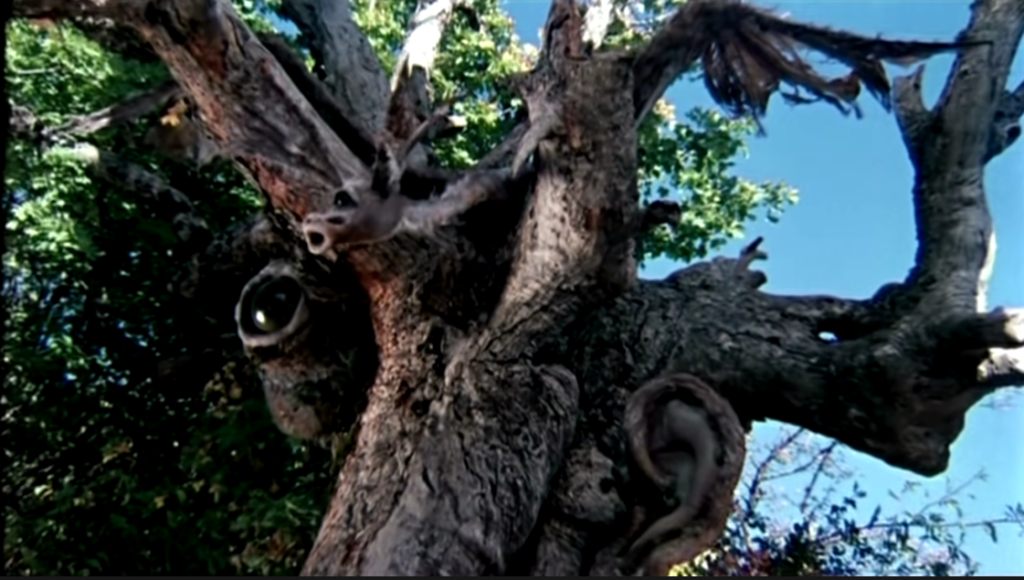
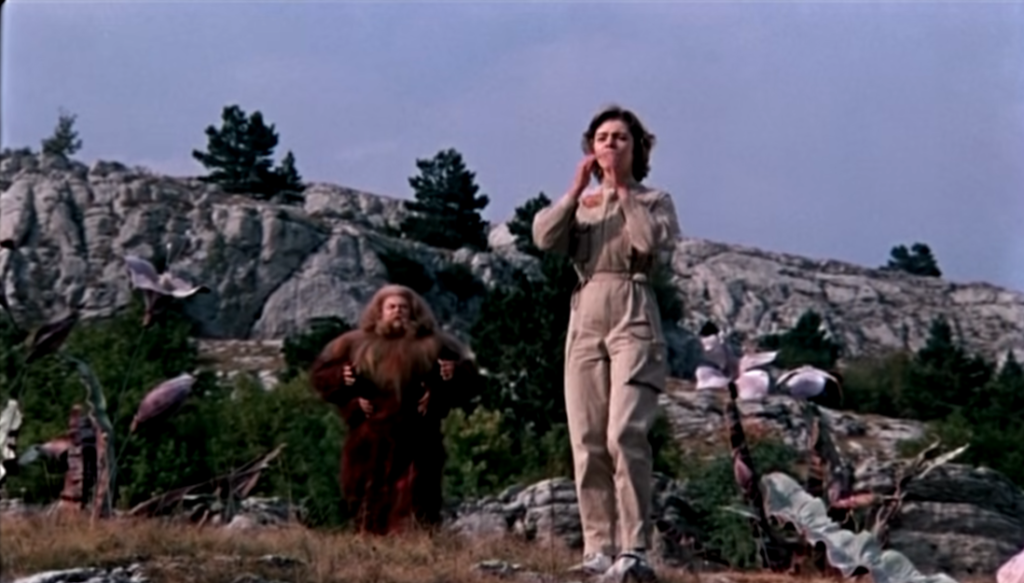
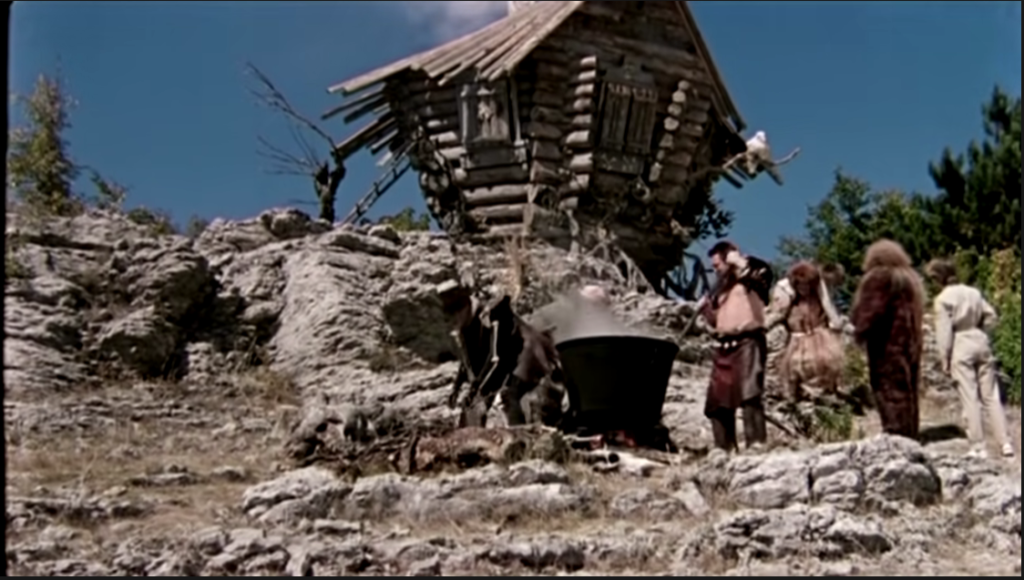
Lilac Ball (1987)
Film review #501
Director: Pavel Arsenov
SYNOPSIS: Travelling aboard their spaceship Pegasus, Professor Selznyova, his daughter Alisa and the rest of the crew encounter Selznyova’s old friend Gromozeka. He explains that he has come from a planet where the population has just been wiped out by a virus that has lain dormant for 26,000 years. The problem is that the same virus was also left on earth, and will activate and wipe out the population in a matter of days unless a cure can be found…
THOUGHTS/ANALYSIS: Lilac Ball is a 1987 children’s sci-fi film based on the novel by Kir Bulychyov. The story starts out aboard the spaceship Pegasus, manned by Professor Selznyova and his crew, including his daughter Alisa. On their travels, they come across the Professor’s friend Gromozeka, who tells them that a 26,000 year old dormant virus has just awakened and wiped out the entire population of a planet…and the same virus is on Earth and will activate in a few days time unless a cure can be found. The only solution is to send Alisa back in time to Earth 26,000 years ago to find the source of the virus. The most notable thing about the film is that it is pretty much an even split between science-fiction and fantasy: almost exactly at the halfway point, the spaceship and future gives way to an ancient Earth filled with fantasy creatures. With a runtime of seventy three minutes, the film certainly packs in a lot of stuff, combining that familiar soviet-era sci-fi aesthetic with some more offbeat fantasy creations. As a film aimed at children, it has to keep up a certain energy level to keep it entertaining, and I think it has plenty of imagination and variety to keep things interesting. The plot is quite packed as mentioned, and is a bit overwhelming to follow. Part of that might be the loose subtitles I watched the film with, and part of it is probably due to the fact that a lot of the original novel was cut to fit it into this fairly short runtime. Intricacies within the plot aren’t too problematic with children’s films though, as long as there’s plenty of jumping off points to spark their imaginations, which I think this film has.
Alisa is the main character of the film, and had appeared in the TV series Guest from the Future in 1984 before this film was made (and portrayed by the same actress). I believe that there is also a series of novels centred around her character, so she’s fairly well established, and it is refreshing to see a good female lead in these types of films. The rest of the characters serve a supporting role, and are a colourful bunch, again split between the more grounded characters in the sci-fi setting, and the fantasy half, where the characters are a bit more outlandish. The earth of 26,000 years ago is probably not very accurate, as there are talking birds, flying monsters, people in wooden houses and other such things which I do not think are historically accurate.
As mentioned, the sci-fi aesthetic feels very familiar if you have watched any other soviet-era sci-fi. The spaceship’s corridors and control panels have that typical look and feel of the time, but have a lot of detail and attention in them that is visually appealing. The spaceship itself is quite a unique design: it is a disc shape with retractable “sails” that resemble paper fans. The scenes with the spaceship flying around evading capture from this giant net…ship…thing is quite well done. I noticed the camera is a bit wobbly as it moved through the sets, which is a bit distracting. Moving into the more fantasy setting, the designs of the creatures reminds me very much of something out of The Neverending Story or Labyrinth, which makes me wonder if they inspired some of the decisions at any point. Lilac Ball has a bit of a dark edge like the aforementioned films, with a trio of comic relief characters being cannibals, and this rather disturbing death scene of this giant bird thing that we follow for about five minutes before it is killed on screen and we are left looking at it’s dying breath. Very odd. Some of the creatures aren’t quite as imaginative as in the novels, probably due to technical and budgetary constraints. Gromozeka is a humanoid-looking alien with four arms for example, but in the original novels, he was much more alien looking, with seven eyes and such. A 2009 partial-remake of this film that, due to it being animated, was able to be much more creative with it’s designs (it even had Alisa’s actress from this film returning to voice Alisa’s mother, which is nice).
Overall, Lilac Ball is an odd combination of science-fiction and fantasy that isn’t really a combination: the film is evenly split between the two. trying to fit these two genres, and a full novel’s worth of plot into such a short runtime creates a story that can be difficult to follow. The film constantly feels like it’s being constrained by one thing or another, but there’s plenty of things going on to keep it entertaining for children, it’s just a shame there’s not enough time or space given to appreciate them.
-
#500 – Star Wars Episode IV: A New Hope (1977)

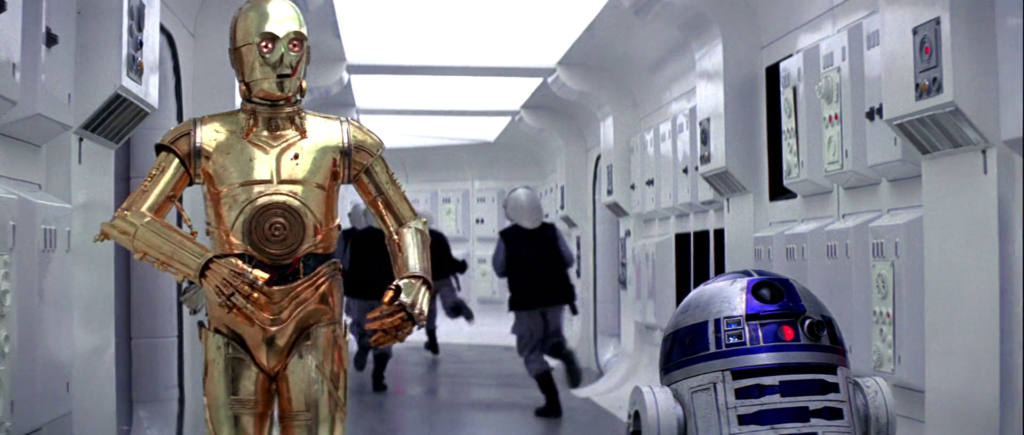
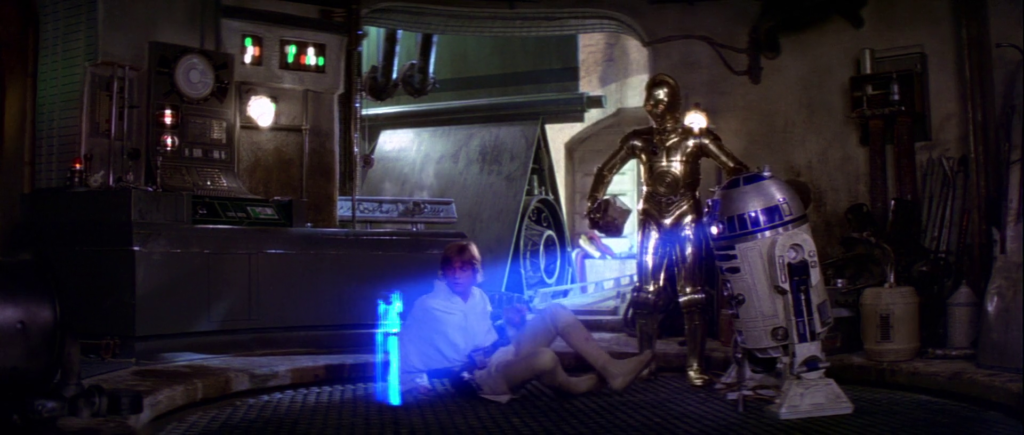

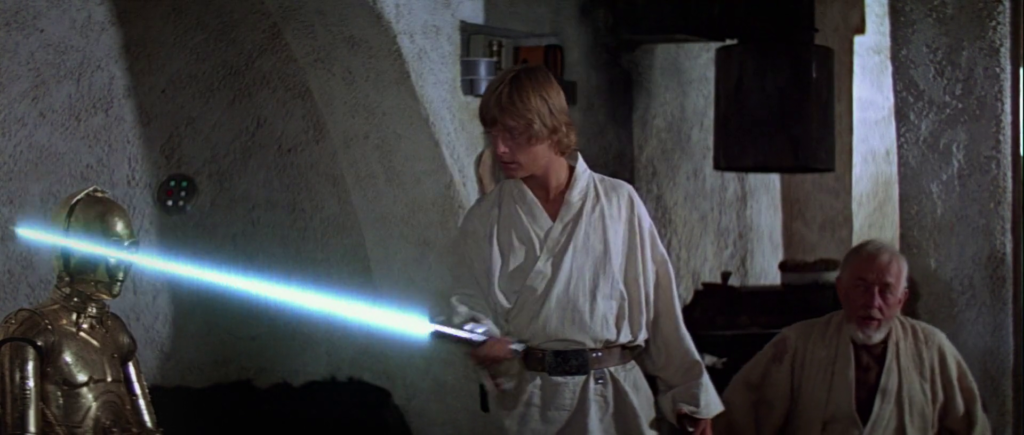

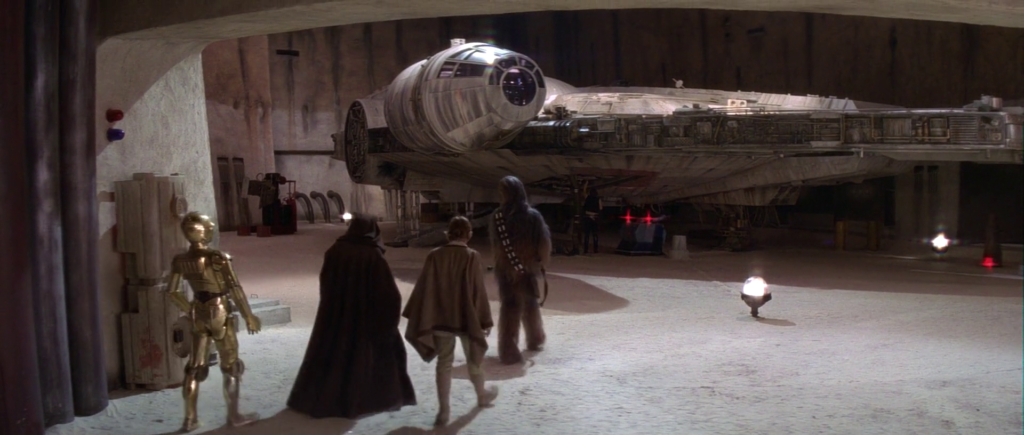


Star Wars Episode IV: A New Hope (1977)
Film review #500
Director: George Lucas
SYNOPSIS: A long time ago, in a galaxy far away…the plans for the evil galactic empire’s new battle station are stolen by the rebel alliance and placed in a droid to escape to the planet Tatooine. Luke Skywalker comes into possession of the droid and discovers a hidden message about the plans. With the droids in tow, Luke sets off to find Obi-Wan Kenobi and learn the ways of the force to bring down the empire, led by the ruthless Darth Vader…
THOUGHTS/ANALYSIS: Happy 500th film review! It’s been a long road to get here, and many hours have been invested into watching the best and worst (mostly the worst) of science-fiction films from all over the world over the last ten years. The plan was always to save this one for the 500th review, because I have famously never watched any Star wars film all the way through, and I have never had any real interest in the franchise, so this is a big milestone for me. So let’s take a look at why the film was so successful, why I was never interested in it, and whether actually watching the film has changed my mind shall we?
Star Wars (subtitled Episode IV: A New Hope after the initial cinema release) is a 1977 science-fiction film directed by George Lucas. It is the first film released in the Star Wars franchise. The film starts off throwing us right in the middle of a story, as outlined in the title crawl: the rebels fighting the evil galactic empire have uncovered the plans for their ultimate weapon: a gigantic space station that can destroy planets. Princess Leia hides the plans in a droid, which is then sent to the planet Tatooine and picked up by a young farm hand named Luke Skywalker. Determined to deliver the message and plans to one Obi-Wan Kenobi, and embark on an adventure to save the galaxy. Originally released as a stand-alone film, Star Wars really throws you right into this “galaxy far away” without much establishing. However, as the film opens up with an entertaining action sequence that shows off the world and its inhabitants better than any exposition could do. The story is pretty much a simple “good vs evil” plot, and I feel like it’s a waste of time trying to find any deep allegories in the world or characters. maybe George Lucas tried to build something more deeper and significant in his constant re-edits (more on that later), but taking the film as a stand-alone feature, it sets its scene around it’s characters fine, but when they talk about the galaxy at large with regards to the senate or whatever, we don’t see or hear much about it, which is a bit disjointing. Personally, I was never too interested in the world-building of Star Wars as this “galaxy far away” was a bit too disconnecting for me as a kid, and especially with their being humans there as well just made no sense. Maybe it’s a small point to get hung up on, but that was the kind of kid I was.
So after the first action scene, we start following the two droids that escape with the plans: C3PO and R2D2. We follow them for…quite a while actually: nearly half an hour of their bickering back and forth before the film moves on. honestly, I think the beginning could have been easily shortened to improve the flow of the film. If the aim was to show the droids and how they fit into the world, then there is certainly some of that in the beginning, but it isn’t really furthered in the latter part of the film. for example, there seems to be a deliberate show of how droids are treated as second-rate beings by humans in the beginning as if droid discrimination is rife in this galaxy, but it is completely forgotten about when the human characters become the centre of the story, and never confronted in the film. Maybe it would have been good for the contribution the droids made in defeating the empire could have been recognised and changed people’s attitudes towards them, but that doesn’t happen. Again, the film is basically a good vs. evil story that introduced a lot of things in passing, but were further explored in subsequent films and other media.
One thing I noticed about the story is a lot of the plot points are strung together by a chain of massive conveniences. The droids are on a ship, which coincidentally has the man they need to find, and are caught and sold to Luke, who just so happens to know Obi-Wan Kenobi, and so on. It’s not really an organic method of storytelling that is quite absurd the more you think about it, and that’s even before you take into account the lore from the prequels and how Obi-Wan should know who C3PO and R2D2 etc.
It is well known that George Lucas was inspired by watching the film serials of the 40s and 50s when he was a child, and that heavily influenced the likes of Star Wars and Indiana Jones. The fairly simplistic nature of the Star Wars “Good vs. evil” story does feel like it could have been the basis of such a serial. The characters too, are reminiscent of that: the characters are all white men, with one woman in the entire cast. Luke is the “blank slate” protagonist that people are to identify and project themselves into as he explores this new world with the viewer. Han Solo is the more typical, action-focused lead, and Leia is the only female character that unsurprisingly needs to be rescued. Darth Vader takes the role of the “masked villain” whose identity was often kept secret until the last chapter of the serial. His appearance is also highly reminiscent of the serial villain “The lightning” from The Fighting Devil Dogs: Who could fire lightning from his hand (A power not shown in this Star Wars film, but is in others), and flies around in a triangular plane that you could say is similar to the “star destroyer” ships seen in Star Wars. It’s difficult to say just how much of an influence these had, given that there would have been no way to re-watch these serials or dig up any information back in 1977 when there was no home releases, but the similarities are way to striking in some regards to be dismissed as coincidence. There is some effort to give some of the characters a more unique personality: Han Solo has a bit of an anti-hero edge that’s not too unique, but his character and performance by Harrison Ford are definitely memorable. Princess Leia too, while still being the sole female character that needs to be rescued from being kidnapped, but her snide remarks, constant backtalking and her eagerness to get stuck in the action with the guys definitely set her apart from the trope she finds herself in. I’m not sure the title of “princess” really helps her character in this respect though, as it isn’t really explained what or where is is supposed to be a princess of. nevertheless, Carrie Fisher’s performance is definitely a stand out from an acting perspective.
There was apparently very little faith in Star Wars being a success, and George Lucas was given a “small” budget of eleven million dollars to work with, which in 1977, while not a big budget, is not nothing. What the film creates is a very unique aesthetic: not the pure, sterile white that is expected from sci-fi (most of the time), but a world covered in grime and dirt, and that feels lived in. The detailed textures on the models of the ships really bring the scenes to life, and it’s pretty impressive how much detail they get on them. there’s definitely a distinct vision in the film’s aesthetic, and for the most part, it is brought to life with no big complaints. The big budget film score by John Williams also provides a lot of memorable acoustic moments.
I should probably mention something about the edits to this film: George Lucas has made many modifications to this film is particular since it was released as a standalone film in 1977. Some of them are cosmetic and actually enhance the world, such as recolouring and adjusting contrast on some of the scenes and models, which I think helps them stand out a lot better. Some of the additions though are pretty pointless, and sometimes harmful to the film. The constant reworking of Han shooting Greedo first is infamously silly and in my opinion just didn’t need to be done. The added CGI characters in some of the establishing shots look really outdated and out of place in the film, and while I get that they are there to make the world more busy, it just ends up being distracting. The added scene with Jabba the Hutt was cut from the original, which I think made sense, as it messes up the reveal of the Millennium Falcon when we see it with Luke for the first time. Out of all the changes, I still don’t get why all the dialogue with Luke being attracted to Leia wasn’t altered or removed, since it’s just weird when we know they are revealed to be siblings in the sequels (spoilers, sorry). I know that they also don’t have any idea about their relation (I don’t think they were supposed to be related when the film was written, but it still seems a bit odd that the whole thing has been left untouched while so much of the rest of the film has been cosmetically altered for no real benefit.
Overall, Star Wars Episode IV: A New Hope is a perfectly serviceable film about good versus evil in a science-fiction setting. It has it’s own unique aesthetic and vision, and adds in enough character development and drama to make it interesting for viewers of all demographics. the influence it had is undeniable: it was a landmark moment in sci-fi that allowed the genre to be taken seriously again, after the low budget, b-movie monster films of the 60’s. However, I do still hold the opinion that part of that was good timing on the film’s release, rather than anything in particular that the film accomplished: it was expected to be a mediocre performer that no one wanted to take a chance on, and I think science-fiction fans were waiting for a film like Star Wars to get into. watching the film properly hasn’t changed my opinion of the franchise, and I’m not suddenly interested in watching the other films or exploring the franchise (although I will get around to viewing the other films eventually), but yes, it is a decent sci-fi film that breathed new life into the genre and was able to fire people’s imaginations, as well as being entertaining. There are plenty of problems with it though, such as the ridiculous reliance on chance encounters for plot convenience, some wobbly acting in parts, and pacing, so all in all, it has done little to sway me, but I see why people would and could enjoy it.
-
#499 – Destination Space (1959)

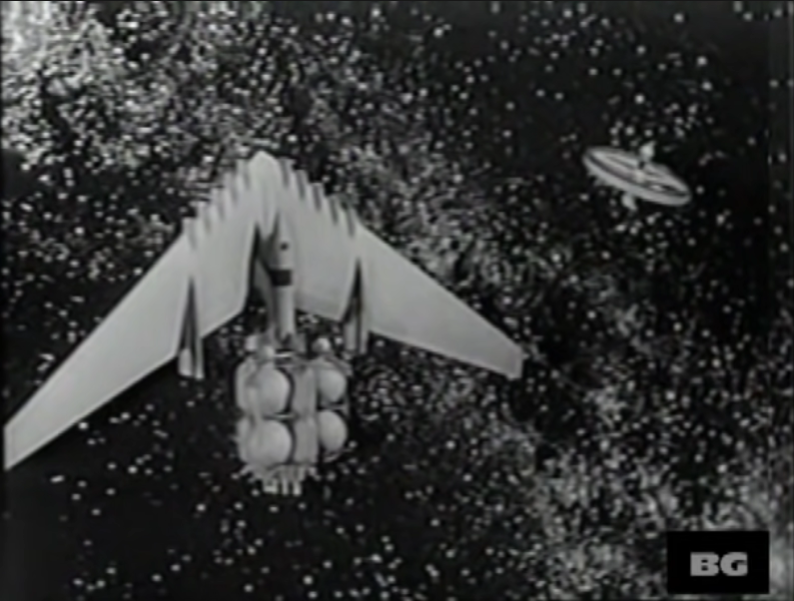
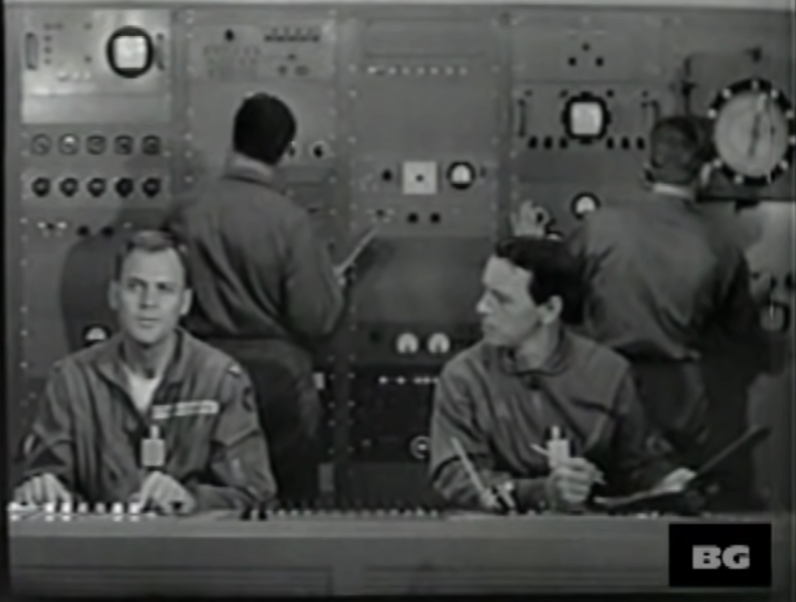
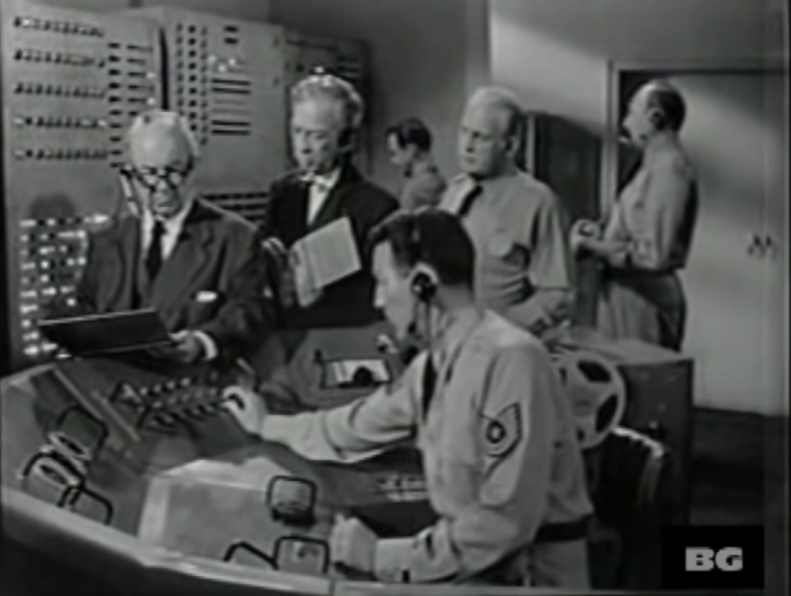
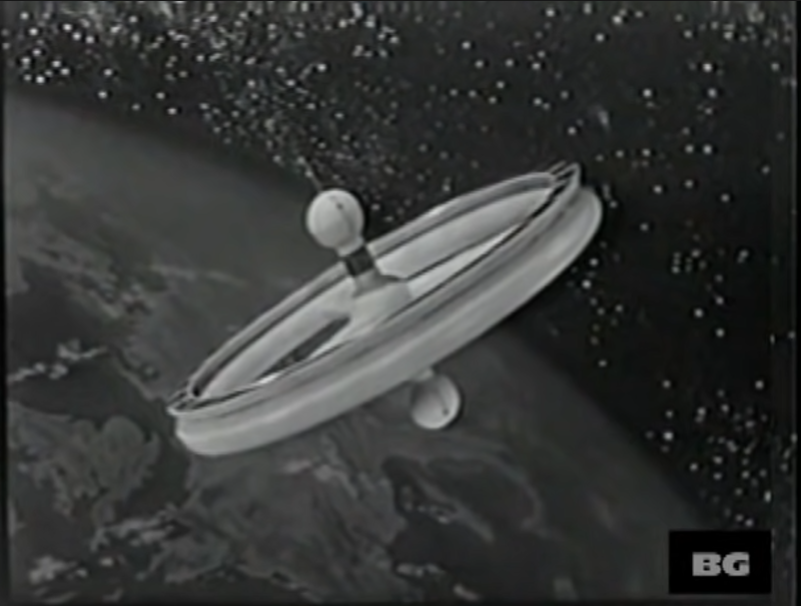
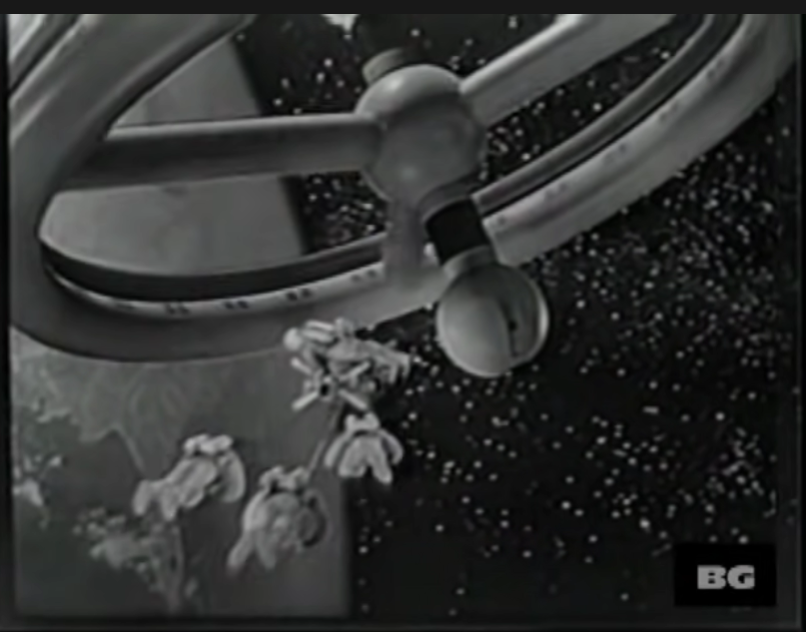
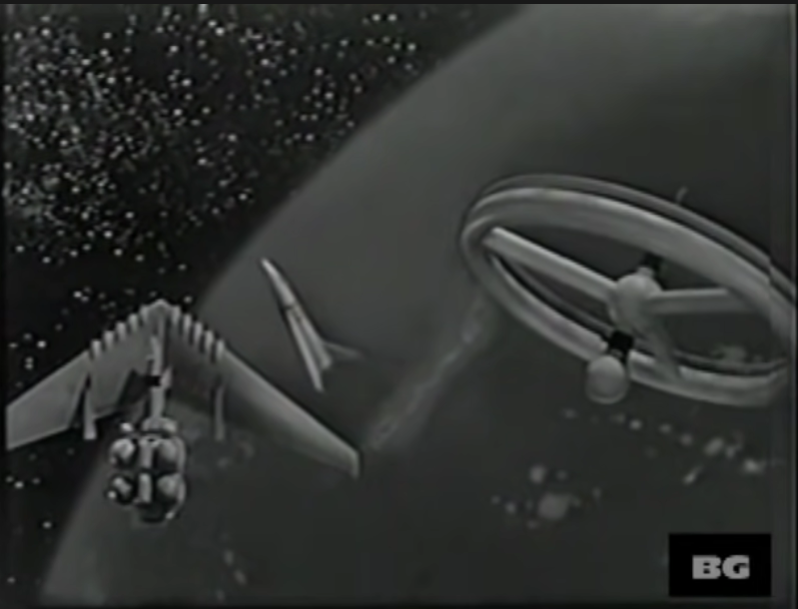
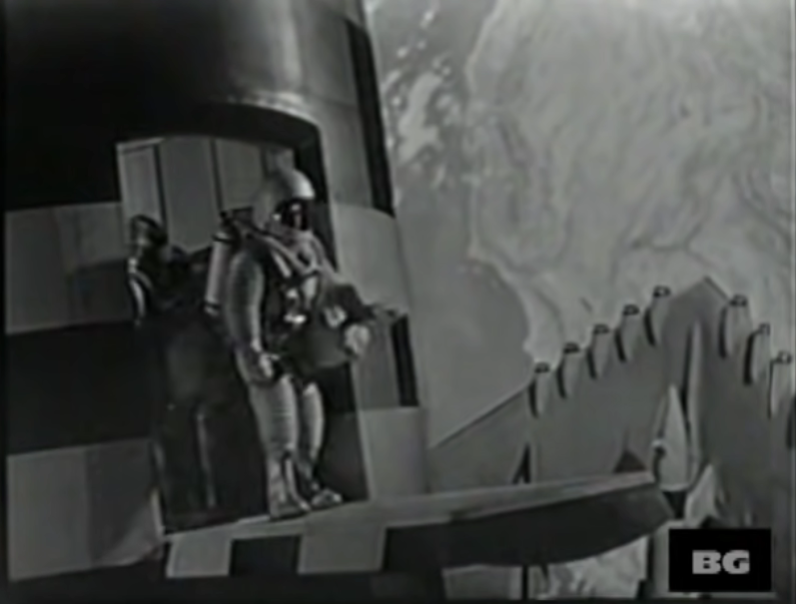
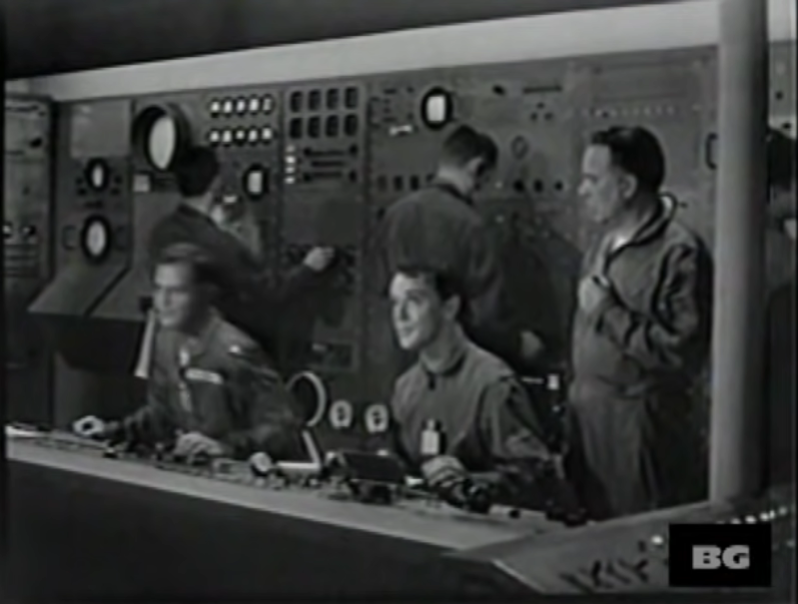
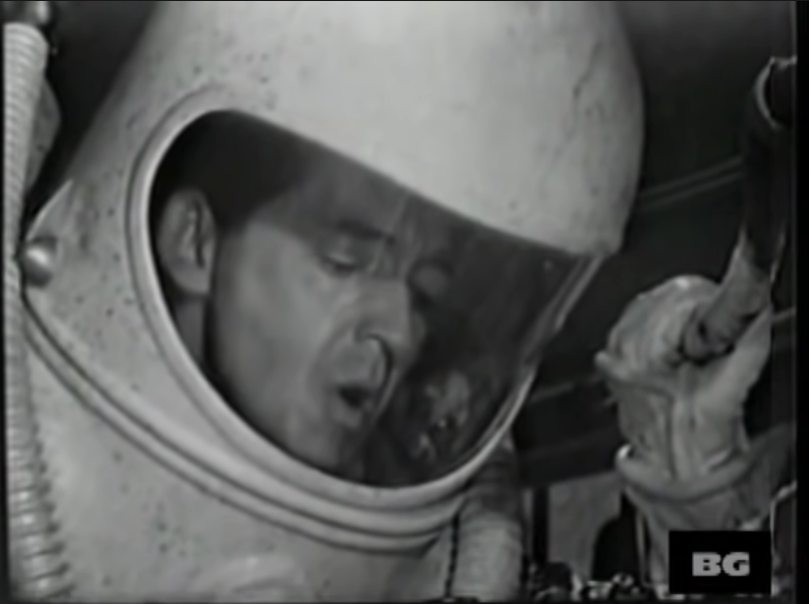
Destination Space (1959)
Film review #499
Director: Joseph Pevney
SYNOPSIS: On board an orbital space station, the launch of a new spaceship is aborted when a meteorite crashes into the station. Jim Benedict, director of the United States space programme and person in charge of the station, appears before a Senate committee hearing, attempting to justify the continued operation of the space station, despite resistance from, in particular, senator Royce…
THOUGHTS/ANALYSIS: Destination Space is a 1959 sci-fi television film that was intended as a pilot for a TV series, but the pilot was never picked up by the networks. The plot concerns the role of Jim Benedict, head of the U.S. space program, and an orbital space station designed to launch spaceships to the moon. After a meteorite strikes the space during a test launch, he faces renewed opposition to his plan, with to being described as a waste of money and too risky. Being a TV pilot, it is only fifty minutes long, and so has to fit a fair amount of content into it: the opening five minutes is decent enough, and provides enough backstory to what’s happening, with a bit of drama and suspense too. However, here is the one big problem with this film/pilot: I don’t know what the purpose of it is. They talk a lot about getting a spaceship to the moon and landing people there, establishing a colony etc. but the film doesn’t get anywhere near doing that, and instead focuses on committee hearings and inter-personal drama that isn’t particularly interesting. I suppose back in 1959 when this film was made the concept of landing people on the moon and space travel would have been more interesting because it had not been accomplished yet. The focus is not on the speculative or science-fiction aspects though, but instead rendering the logistics of space travel into a drama: the film spends more time in a senate committee hearing than it does in space. As a self-contained film it has no real climax or payoff, and no real progress is made on the objectives, which I suppose would have been part of the TV series if this pilot would have been picked up. However, I’m not sure where the TV series would have gone in that respect: would they have gone to the moon eventually? What then? More committee meetings? In making the premise so grounded and “realistic,” there seems very little scope for development and possibilities with the set up. As such, I can see why as a pilot it was not picked up for a full TV series.
The characters are a typical cast that aren’t particularly interesting or memorable. Jim Benedict is the typical male lead, like the type yo9u would see in the B-movies or serials in the 50’s: embodying the all-American ideals of ambition, adventure and such forth. The female characters solely exist as love interests for male characters, notably Jim’s girlfriend June and his buddy Dave’s girlfriend Kim. Kim also randomly confesses her undying love for Jim too, setting up a love triangle which really adds nothing to the story. I suppose there’s an effort to keep the characters grounded in line with the “realism” of the story and drama, but not making the drama between the characters compelling really leaves nothing for the viewer to hook onto.
There’s some ambition in setting the scene for the film/series; the models of the space station and shuttle orbiting earth are compelling enough for the time, though nothing special. The interior sets too are full of detail, which makes it stand out to me against the swathe of b-movies which looks like they were made on a shoestring budget. Overall though, it is easy to see why Destination Space did not get picked up for a TV series: while some of the visuals are interesting, there’s not any real indication of where the series would go other than more boring senate meetings. The decision to focus on drama and the realism behind the ideals of the space race doesn’t really offer anything because the characters are dull and uninteresting, without any unique traits to invest in. As a standalone film, it doesn’t offer the typical plot of a problem, a flowing narrative and climax, and is just really boring. Maybe it would have been of more interest at the time when the space race was more in the national conscious, but it’s got nothing to offer this long after the fact.
-
#497 – Wahan Ke Log (1967)



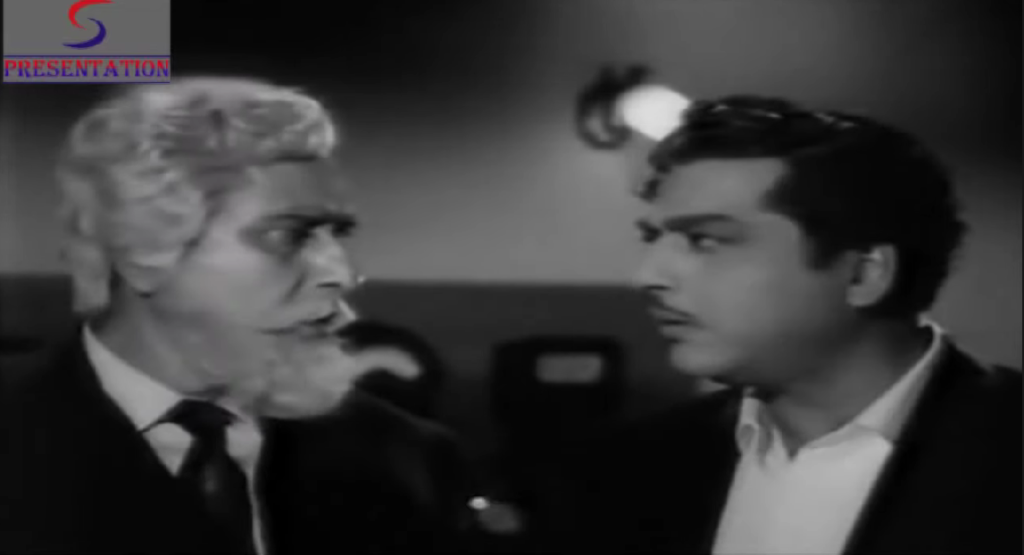






Wahan Ke Log (1967)
Film review #497
Director: Nisar Ahmad Ansari
SYNOPSIS: Martians are contacting and blackmailing various wealthy people to hand over their diamonds. Agent Rakesh is assigned to investigate these Martians and put a stop to them.
THOUGHTS/ANALYSIS: Wahan Ke Log is a 1967 Indian sci-fi film. The film revolves around a case concerning Martians contacting various wealthy individuals to blackmail them into handing over their diamonds, in preparation of an invasion of Earth. When the head of the central intelligence services is killed by these Martians, agent Rakesh is assigned to the case along with Neelkanth, a private detective, and they travel to Bombay to commence their investigation. This film is an interesting mix of things: it has the fundamentals of a typical Bollywood film with the romance, drama and musical and dance interludes, but also intermixed with a plot reminiscent of the James Bond 007 parodies and imitations that emerged (predominantly in Europe) around the time. The sci-fi element concerning the aliens and spaceships has the feeling of a Hollywood b-movie too, so combining all of these different genres gives the film a bit of a unique feel. With all these different things going on though, the film feels a bit disjointed as it moves between the different aspects of the story, and there can be large gaps between certain elements don’t factor in. The central story is fairly robust though, and has some twists and turns that drive the plot and characters forward. The mystery surrounding the aliens is likewise one that maintains viewer interest, but is neglected over parts of the film.
The tone of the film moves between a more traditional Bollywood drama/romance and more of a comedy. As mentioned, it reminds me of the 007 parodies and imitations that came out in the late 1960s. Rakesh himself embodies both the romantic male lead, and also a comedic fool. However, Neelkanth usually takes up the comedic role as the jester-like sidekick for himself, leaving Rakesh to deal with situations like living with his overbearing Mum pressuring him to get married and such. Anita as the love interest is fairly passive and has a very traditional role as such. The villain Anil Chakravarty is a gangster who has kidnapped the scientists of the world to construct machines to prepare for the Martian invasion of Earth, and he is definitely presented as a typical Bond villain who has his own mystery about him.
The film has many of the lavish Bollywood song and dance numbers you would expect. I’m not an expert on Bollywood music and films, so I can’t really compare them to others, but they do the job. The sci-fi elements such as the aliens, UFO’s, and sets are all very reminiscent of the b-movie productions I have mentioned, and in that context, they are fairly well done. The UFO’s are decently detailed, and the sci-fi sets have plenty going on in them, so they are interesting enough for the purposes of the film. Overall, Wahan Ke Log is an interesting mix of genres with a capable story, but it’s really nothing more than a novel bit of history at this point.
-
#496 – Captain Nemo (1975)
Captain Nemo (1975)
Film review #496
Director: Vasili Levin
Just when you think you’ve reviewed every adaptation of 20,000 Leagues Under the Sea…
SYNOPSIS: Following sightings of a mysterious giant creature in the oceans targeting various ships, Professor Pierre Arronax takes a voyage on the Blue Star liner to hopefully encounter and figure out the nature of this supposed beast. However, when the ship encounters it, an attack knocks the Professor, his servant Conseil, and harpooner Ned Land overboard. They awake and find that the sea monster is not a monster at all, but a submarine called the Nautilus, within which they are now captive under the supervision of Captain Nemo…
THOUGHTS/ANALYSIS: Captain Nemo is a 1975 three-part TV movie, and an adaptation of Jules Verne’s 20,000 Leagues Under the Sea. The plot of the film follows the original novel fairly closely, with Professor Arronax, his manservant Conseil, and harpooner Ned Land being swept overboard from the ship they are on to find themselves rescued by Captain Nemo and his submarine the Nautilus. Thus starts a series of adventures as the captives explore with Nemo the oceans of the world and it’s inhabitants. With a runtime of nearly three and a half hours, the film takes its time in establishing the setting and characters, and bringing the novel to life. It does omit some of the more fantastical (exploring Atlantis etc.) parts of the story and instead keeps it grounded, which a lot of the adaptations do admittedly, so that’s nothing special. With such a long runtime, the film does feel a bit too grounded, and there’s a lack of variety as the captives are confined to the Nautilus apart from the odd excursion under the sea. As such, the adventure aspect falls a little flat. The film does go into a bit more detail regarding Nemo’s past and the suffering of his family and people by colonial forces. The original novel kept things fairly ambiguous regarding the nationality of the forces, but the film here identifies them as British; which would have been accurate, since Nemo is meant to have been a prince in India, and it was British forces which occupied it. The film also casts a similarly critical eye on the Spanish conquest of the Incans. I suppose since the film was made in the Soviet Union they were more inclined to explicitly show the cruelty of Western colonialism and name the specific nations involved.
The characters from the novel are all faithfully represented, and the movie doesn’t really change their personalities, and neither does it need to: Arronax is the astute, analytical scholar, his manservant Conseil serves as a bit of comic relief (although it is much more muted and slight compared to other versions which make it more explicit), and Ned Land is the brawly, short-tempered type who directly contrasts with the rational Arronax and the stoic Nemo. The characters are portrayed very well with regards to their strengths, but they do again feel a little too grounded and as such never evolve past their starting points. Like the novel, and many of Jules Verne’s stories, there’s a noticed lack of any female characters; the only one being Arronax’s wife, who we see sparingly as she receives news about the fate of her missing husband.
The settings of the film are nicely varied: the flashbacks set in India and France feel authentic and lively. The Nautilus sets are very detailed and full of activity, although you see so much of them you might think you’re being held captive on the Nautilus too. The diving suits used for the ocean walk scenes look suspiciously like space suits, which makes me think they’re leftover props from a sci-fi film (probably one I’ve reviewed at some point). The underwater footage is a combination of stock footage and an indoor pool dressed as the ocean, which still looks pretty decent.
Overall, Captain Nemo is a fairly decent adaptation of the popular novel, and although it offers an accurate representation of the characters and settings, it lacks a spirit of adventure and the more fantastical elements that are a crucial part of the stories success. There’s obviously plenty of effort and care that has been put in to making this version, and it’s fairly solid. If you want a more streamlined cinematic experience though, you might be better off with another version (there’s plenty of them).
-
#493 – Back to the Siam (2013)
Back to the Siam (2013)
Film review #493
Director: Gonzalo Rodan
SYNOPSIS: Marty visits his friend Doc Brown and finds that he has invented a time machine…made from a fridge. A bunch of men in suits appear and try to catch Marty and the Doc, leading to Marty accidentally being transported back in time to the year 1986. There, he has to find Doc Brown again to help him fix the time machine to get back home…
THOUGHTS/ANALYSIS: Back to the Siam is a 2013 science-fiction film, based on…well, you can probably guess. The film centres around Marty Fox, who visits his pal Doc Brown to find he has completed work on a time machine that he has constructed himself out of a fridge. However, some men in suits come to put a stop to the Doc’s experiments, and Marty is accidentally sent back in time to 1986, damaging the time machine in the process. Marty goes to the Doc Brown in 1986 to get help in fixing the time machine and sending him home. The film is essentially made as an Argentinian Back to the Future, so while the essential plot is more or less the same, a lot of the settings, people, and scenarios are replaced by things which are more common to Argentina. For example, instead of the lightning storm which takes Marty back to the future in BttF, here it is the electricity generated when footballer Maradona scores a goal at the 1986 world cup. This is obviously a low-budget, somewhat satire of the films, so you can’t penalise it for accuracy, but the changes it has made to the film mostly fit the story well, and give the story a bit of a twist. Obviously it is based on the foundations of an already well written film in BttF, so I don’t want to give Back to the Siam too much credit for that. I could not find any English subtitles for this film, but I don’t think it really matters if you know Back to the Future like nearly everyone does, but does mean I can’t really comment on the jokes or humour. The physical humour is mostly entertaining though.
The biggest change from Back to the Future is that the “past” in this film is 1986, which is about the same time that the “present” was in BttF (1985, to be exact). This could have been a pretty interesting thing for the film to play with, but as mentioned, it’s aim is to make an Argentinian take on the original, rather than try anything too new. The main characters too are basically the same, just tweaked to reflect their locale. The character of Biff Tannen doesn’t have a counterpart in this film though, and instead the antagonists are just men in suits. The main focus of the story is the first Back to the Future film, but there’s some nods to the second and third film, so it definitely feels like a take on the franchise as a whole, which is nice, and means that the film won’t set up a sequel it will never get.
This should not come as a surprise, but this film is completely unlicensed, and has no permission to use any of the names, characters, or anything. It reminds me of the films of the 60s and 70s that would simply make films based on entire franchises without permission, typically in countries where they would not be found out and sued into oblivion. Back to the Siam doesn’t use any Back to the Future footage, but it does use a lot of the music, which it definitely doesn’t have the licence for: if you were going to argue this was simply a fan-made parody, then that might be the thing that tips it over the edge into plagiarism territory. Despite being a low budget “parody,” there’s obviously a lot of thought and effort gone into certain aspects of the film: the fridge being the time machine instead of the DeLorean (obviously there would have been no way to afford one) genuinely works and looks cool, as well as providing some fun gags. The camera work is also surprisingly good, and shows competency when switching between different angles in scenes. The biggest production issue is the audio: it constantly peaks and distorts, and voices in the same scene can often have completely different volume levels. Even doing something basic like having a limiter would have helped immensely; it’s quite odd that there’s such a disparity between the camera and audio work.
Overall, Back to the Siam is what you would expect from a low-budget parody/re-make/bootleg…whatever you want to describe it as. It uses the successful formula and story of what it is based on, and adds it’s own flair. While keeping fairly close to that original, it also sometimes decides to just go ahead and do what it wants. At one point it decides to just through in a version of “A whole new world” from Disney’s Aladdin for no reason. I appreciate the randomness though, and also the effort taken to give the source material a different flair. It’s not going to offer you anything that Back to the Future doesn’t, and a lot of the Argentinian cultural references may not offer anything if you’re not familiar with them, but it definitely could have been a lot worse.
-
#491 – The Alligator People (1959)
The Alligator People (1959)
Film review #491
Director: Roy Del Ruth
SYNOPSIS: Newly-wed couple Joyce and Paul Webster are aboard a train on the way to their honeymoon when Paul receives a telegram that disturbs him, causing him to get off at the next stop and vanish, leaving Joyce on her own. She relentlessly pursues any clues about where her husband may have gone, leading her to a plantation in Louisiana, which he once registered as his college address. There, she suspects that there may be some answers to her questions, but everyone seems to think otherwise…
THOUGHTS/ANALYSIS: The Alligator People is a 1959 sci-fi horror film. In the opening, we see nurse Jane Marvin undergoing a treatment to cure her amnesia. While in a sedated state, she recalls to the supervising doctors the plot of the film: Joyce (as she was then known) had just got married, and they were on the train for their honeymoon, when Paul receives a telegram. Paul seems shaken by the contents and gets off the train at the next mail stop and disappears without explanation, leaving his new wife lost and confused about what happened. Joyce spares no effort in tracking him down, but the only clue she is able to find is an address he gave when he enrolled at college for a plantation in Louisiana, and so Joyce heads there to try and get some answers. The story of the film is honestly pretty well done: everything is contained, flows nicely, the twists are decent, and the explanations and justifications for everything that happens make sense. However, it is still a b-movie from a time when these types of films were cranked out en masse, and so it fits into a category in which things are expected to be a bit cheap and unoriginal. It’s executed better than some of the B-movies I’ve seen, but I think the problem is that it’s still not a very interesting setup. The horror element of the film doesn’t really meet expectations, as the “Alligator people” from the title turns out to be just one person, who is fairly humanised so as to not be portrayed as much of a threat.
The female lead provides a more original twist on the b-movie film, and her inquisitiveness and relentless pursuit of answers concerning her husband is one of the strong points of the film. Unfortunately, there are also moments where she becomes a more typical “damsel in distress,” and the film doesn’t seem to know how to break out of these archetype completely, and her character jumps can go between these two poles very suddenly and awkwardly. The rest of the cast have particular roles to play that, again, while they’re nothing special, fulfil their purpose well. There’s no real gaps in the story or characters which would disrupt the viewing experience, which is pretty rare in a b-movie like this.
The “alligator person,” when their face is finally exposed, is a scaly and deformed result of an experiment designed to harness the limb regeneration of alligators and apply it to humans (again, the explanation works pretty well). The makeup is okay, and not too distracting. When he finally transforms fully into an alligator human hybrid, the results are much worse, as it is clearly a guy in an alligator mask. Apart from that, the execution and production of the film are generally good, with the photography and camera setups working well, and scenes having a good level of detail. Overall, The Alligator People is a decently executed film that ties its characters and plot together well. The main problem is that it’s just not that interesting, and in terms of b-movie monsters, it’s just not as memorable or terrifying as others. It’s definitely better than many B-movies I’ve seen, but a bit of a bore.
-
#490 – Artemis 81 (1981)
Artemis 81 (1981)
Film review #490
Director: Alistair Reid
SYNOPSIS: An epic battle for the future of mankind is about to wage between Helith, the angel of light, and Asrael, the angel of death, Novelist Gideon Harlax finds himself caught up in the middle of this struggle, as the world becomes the battlefield…
THOUGHTS/ANALYSIS: Artemis 81 is a 1981 TV movie. The overall story concerns the battle for the future of mankind between the angel of light named Helith, and the angel of death, Asrael. At the centre of it all seems to be Gideon Harlax, an occult novelist who has detached himself from all emotion. This TV film is very slow-paced and meandering: the first act deals very much with exploring the human creative process and dealing with emotions, which as you might expect is a very broad and varied wander through a lot of different subjects. The film definitely requires your full attention to understand what is going on across its three-hour runtime, but even then you might not get the whole picture, as the themes it explores are very subjective and may not directly impact the story. There’s definitely plenty of depth to it’s exploration of its subjects, and it pushes the boundaries of what you might expect something produced in 1981, in terms of its discussion of homosexuality, suicide and sex. All in all, there is a lot going on in this film, and while it is all very deep and powerful, there’s little sense of pacing and being able to produce an overall coherent narrative: part of that is intentional, because it is very much an exploration of the messy thoughts and feelings of people, but the part of it which ties everything into this battle between the two angels never manages to achieve it’s goal I think.
The film starts off focusing on Gwen Meredith, and her chance meeting with famed musician Albrecht von Drachenfels, whom she wishes to play for. She wishes to explore the depths of feeling and expression in her music, but Gideon, her…friend? husband? I honestly couldn’t work it out; his indifference to getting emotionally involved with anything forms a stark contrast with the people around him. We see his discussions with a number of people baring their souls while he remains cold and unmoving, and it works as a setup that allows us to explore the themes the film sets out. The plot of the two angels battling it out is the most interesting aspect, but it’s typically dealt with so abstractly it’s quite difficult to follow. There’s a plot concerning Albrecht and his Mother, and how this relates to the two angels trying to either wake up their Mother or let her sleep, but again it’s left mostly open to interpretation. On a somewhat interesting note, the angel of light is played by Sting in his first big (?) acting role: luckily, his awkward portrayal works pretty well since he’s playing an angel that doesn’t really know how to interact with humans.
Overall, Artemis 81 is a very full-bodied experience that requires your full concentration to grasp both the overall story and the exploration of the issues it raises. The uneven pacing doesn’t help with respect to getting to grips with the content of the film either. The dialogue is extremely unnatural and metaphysical, leaving every conversation feeling like an exercise in philosophical discourse. Despite all of this opacity though, Artemis 81 does have the courage to push some boundaries, and takes the subjects it addresses seriously, and if you have the concentration to watch it uninterrupted for its three hour runtime, then it’s an interesting film of it’s time.
-
#489 – The Monster of Piedra Blancas (1959)
The Monster of Piedras Blancas (1959)
Film review #489
Director: Irvin Berwick
SYNOPSIS: The quiet Californian town of Piedras Blancas hides a dark secret: in the caves beneath the lighthouse, there hides an ancient monster that starts killing the residents of this sleepy town. Unaware of the monster’s existence, a number of the residents try to find out what is causing the killings…
THOUGHTS/ANALYSIS: The Monster of Piedras Blancas is a 1959 sci-fi horror film. Set in the small lighthouse town of Piedras Blancas in Southern California, the residents of the town find themselves being killed off one by one, with no idea who…or what is doing it. The film is paced like a typical monster movie of the time, with very little momentum at the beginning, and various murders until the monster’s reveal. The pacing is very slow in this one, and we only get the reveal of the monster about two-thirds of the way in, and everything before just involves these cast of characters that do little to distinguish themselves. The dialogue is pretty dull, and the character development doesn’t help make things exciting. I suppose this dullness reflects the setting of this sleepy seaside town, but it doesn’t really make for an interesting movie.
The film is an independent production, so it doesn’t have the backing of the big studios, but then again, those same studios were cranking out films like this at about the same quality, and the same runtime just over an hour long (this runtime was typically suitable for being shown at drive-in cinemas as part of double features, that were popular at the time). As such, it’s rather indistinguishable from a more ‘mainstream’ production. The on-location shots of the cliffs and the town do give it a more authentic feel instead of just relying on sets, so it does have that going for it. The cast of characters can easily be remembered by their roles, and their names are somewhat irrelevant: you have the doctor, sheriff, storekeeper, lighthouse keeper and the young couple. Each of them, as mentioned, fills out a fairly predictable role, and adds very little to proceedings. The young woman manages to show a lot of skin fairly regularly (even going swimming in the sea naked at one point), which would have been a little risqué at the time, and not something I’m sure a bigger production could have gotten away with.
The most notable aspect of this film is definitely the monster itself. Very similar in design to “The creature from the black lagoon,” (and designed by the same creator), the monster is based on a diplovertebron, which was a prehistoric creature that lived over three hundred million years ago. We don’t get too many shots of the creature in it’s full glory, but when we do it looks fairly decent for the time, with a scaly skin and water oozing out of its mouth. One of the other most memorable aspects of the film is the use of gore. In most Hollywood films, the killings would be done offscreen or without any blood or viscerality. When we get the full reveal of the monster, he is carrying the bloody decapitated head of his latest victim, which certainly comes as a shock, since nothing else has happened in the film up to that point, and also you just don’t expect to see that kind of gore in these films; also, the effect looks pretty convincing too. We get another shot later on of the abandoned head being walked over by a crab which is also has the same effect, but apart from that, there’s not too much to say about this film. The Monster of Piedras Blancas is a fairly forgettable film save for one or two moments that show off its horror credentials. It’s fairly short runtime means you can probably check it out without too much fuss though.

